#black female jazz singers 1960s
Explore tagged Tumblr posts
Text

Today In History
Nina Simone, known as the “High Priestess of Soul,” was born in Tryon, NC, on this date February 21, 1933.
Nina Simone studied classical piano at the Juilliard School in New York City. Performing in night clubs, she turned her interest to jazz, blues and folk music and released her first album in 1957, scoring a Top 20 hit with the track “I Loves You Porgy.” In the 1960s.
Simone became known as the voice of the Civil Rights Movement. She wrote “Mississippi Goddam” in response to the 1963 assassination of Medgar Evers and the Birmingham church bombing that killed four young African American girls. She also penned “Four Women,” chronicling the complex histories of a quartet of African American female figures, and “Young, Gifted and Black,” borrowing the title of a play by Hansberry, which became a popular anthem. After the assassination of Reverend Martin Luther King Jr. in 1968, Simone’s bassist Greg Taylor penned “Why (The King of Love Is Dead),” which was performed by the singer and her band at the Westbury Music Festival.
“So while you’re imitating Al Capone, I’ll be Nina Simone and defacating on your microphone” - Lauryn Hill
CARTER™️ Magazine
#nina simone#carter magazine#carter#historyandhiphop365#wherehistoryandhiphopmeet#history#cartermagazine#today in history#staywoke#blackhistory#blackhistorymonth
63 notes
·
View notes
Text




Ruby Falls {January 16, 1946 - June 15, 1986}
Ruby Falls has been the most successful black woman country performer to date, with her mellifluous voice taking her to the Billboard country singles chart nine times between 1974 and 1979. Her biggest hits were “You’ve Got To Mend This Heartache,” which peaked at number 40 in 1977 and “I’m Getting’ Into Your Love,” which peaked at number 56 in 1979. Falls was also nominated as country music’s Most Promising Female Vocalist in 1975 by country industry trade media. She recorded on the 50 States Records label and also found success in her stage shows. In the late 1970’s, she was touring through the Atlas Artists Bureau with Grand Ole Opry star Justin Tubb. She also performed with such country greats as Faron Young, Jeanne Pruett, Del Reeves, Narvel Felts, and Dave & Sugar. She additionally got significant Nashville area and national promotion on such television programs as the Ralph Emery Show, Nashville Today, Good Ol’ Nashville Music and Music Hall America.
When Falls died in Nashville at the young age of 40 of a brain hemorrhage in June 1986, she was touted by the media along with Linda Martell for becoming one of the first black women to find significant success in country music. In a brief retrospective nine years after her death, Nashville’s major daily newspaper, The Tennessean, proclaimed, “Along with other successful black artists of the period, such as Charley Pride and Stoney Edwards, she helped illuminate the black community’s long history of artistic contributions to the country.” Tubb told the media after her death that “She was the one of the best friends I ever had. Ruby Falls made everybody feel good that she was around.”
Born as Bertha Frances Bearden (married: Dorsey) in January 1946, on a farm near Jackson, Tennessee, Falls spent her early years primarily picking cotton, tomatoes and strawberries. She dreaded her days in the field at the hand of a strict grandmother, who was her guardian. For refuge, she listened to the radio a lot at night, particularly to country music heard frequently on station KLAC out of Gallatin, Tennessee. The sounds she heard prompted her to dream of a singing career. She began that career singing in churches, in schools on talent shows and at local social events as a teenager.
After high school she moved to Milwaukee, Wisconsin, took voice, dance and charm lessons, and turned professional in early 1960’s by becoming lead singer with the group Harvey Scales and the Seven Sounds. The group travelled all over the country and performed country, pop, and rock in such places as Las Vegas and New York supper clubs. Then she joined a rock and jazz band whose club dates were typically closer to home. Then she decided to concentrate on the music she enjoyed most and moved to Nashville. There she was discovered by Johnny Howard, who signed her to 50 States in 1974.
She took the name Ruby Falls from one of Tennessee’s natural treasures- a cavern that is 1,100 feet below the surface of Lookout Mountain in Chattanooga, is the deepest cavern in the United States and boasts the highest underground waterfall open to the public. “It’s like a dream come true,” she says in a publicity brief, about her success as Ruby Falls. “I get to thinking about everything good that’s happened to me since I moved to Nashville and sometimes I get so excited I feel I sing in my sleep every night.” Of her move to Nashville to concentrate on both singing and writing country, she adds, “It made sense. There’s a lot of country girl left in me and I guess it shows in my music like it does in my talking…I love music and I love people, so my main goal is making music that people will love. I want to do my very best all the time so people will love me.”
After pounding the Nashville pavement and landing a recording contract, Falls found that having records out in the public and getting touring dates was not enough to bring her what she wanted. She wanted more. She wanted to catapult her career to the next level. A grand opportunity to just that came to her in 1976 when she won a slot to perform before thousands of country radio on-air personalities and executives from around the country. Gathered in Nashville for their annual industry convention known as the Country Radio Seminar, these are the people who somehow had to become attracted to Falls and be part of an overall effort to promote her and her music if she were to become a true star. But the opportunity didn’t open the doors she had expected, and by the time of her death she was disgruntled at not having done better in her career and had taken a traditional job at a computer firm.
Falls did not blame people’s reaction to her race for her not reaching the heights she had dreamed of, and she had earlier vowed to keep trying to reach her career goals in every way she could think of. “Everybody’s been real nice to me,” she said in a September 1977 Essence magazine article. “I’ve never had negative incidents on the road. If I did, I wouldn’t pay them any mind…I want to be a star. No one ever told me that it was gonna be easy. I’m gonna hang on in there for as long as it takes to make it.”
articles: Hillbilly Music Jet Billboard The Black Women Of Country Music That Nashville Sound
Youtube: Sweet Country Music {1975} He Loves Me All To Pieces {1975} Let's Spend Summer In The Country {1975} Show Me Where {1976} Somewhere There’s A Rainbow Over Texas {1976} Beware Of The Woman (Before She Gets To Your Man) {1976} You’ve Got To Mend This Heartache {1977} Do The Buck Dance {1977} Three Nights A Week {1978} If That’s Not Loving You (You Can’t Say I Didn’t Try) {1978} I’m Gettin’ Into Your Love {1979}
Stella Parton Remembers Singer Ruby Falls {2022}
Country Music Time #767: interview {1982}
6 notes
·
View notes
Text
Tony Bennett, the American pop and jazz singer who became the torchbearer for the Great American Songbook during a seven decade career, has died aged 96, his publicist said on Friday.
Bennett was perhaps best known for his 1962 signature song I Left My Heart in San Francisco as well as for staging an astonishing career comeback during the 80s and 90s that delivered him sustained popularity into old age. He won 18 Grammy awards, including a lifetime achievement award in 2001, and has sold more than 50m records worldwide.
In 2020, it was announced that he had been diagnosed with Alzheimer’s in 2016. He wrote on Twitter: “Life is a gift – even with Alzheimer’s.” It was revealed that while his cognitive function was impaired, he was still able to sing a whole range of his repertoire.
Bennett’s ability to perform across the genres of pop, big band and jazz won him plaudits and a conveyor belt of willing collaborators. He proved his relevance in 2014 by collaborating with Lady Gaga on the album Cheek to Cheek, which saw the pair tackle a series of jazz standards. It was a No 1 record in the US and made Bennett the oldest living act to reach the top spot, a record he already held thanks to his 2011 album Duets II.
Born Anthony Dominick Benedetto in 1926 to Italian immigrants, Bennett had an impoverished upbringing in Queens, New York. His father died when he was 10 years old, although he was already singing professionally by that point. As a teenager he became a singing waiter, earning money for the family before enrolling to study music and painting at New York’s School of Industrial Art.
Bennett was drafted into the US army in 1944 to fight in France and Germany during the final year of the second world war. It was an experience that scarred him. “It’s legalised murder,” he said during a 2013 Guardian interview.
But he continued to sing while in Germany as part of the occupying force, and in 1949, after returning home, his singing career could begin properly, first under the name Joe Bari and then as Tony Bennett.
His breakthrough came in 1951 with his first No 1, Because of You. The hits continued throughout the decade with songs such as Blue Velvet, Rags to Riches and material that looked towards the swinging sound of his childhood hero Frank Sinatra. Bennett became a teen idol, and when he married his first wife, Patricia Beech, in 1952, 2,000 female fans dressed in black to “mourn” the event outside the New York ceremony.
In 1962 he reached superstar status thanks to his version of the 1953 song I Left My Heart in San Francisco. The song won Bennett two Grammy awards and became a 20th-century pop standard.
Bennett’s style, however, was already looking outdated as the British invasion swept the US charts, and he struggled for relevance during the 1960s. The following decade saw him face a number of personal problems, including the end of his second marriage and serious drug addiction. Yet two albums recorded with pianist Bill Evans would be key to his later re-emergence as a central figure in US music.
The turning point in his life came when Bennett hired his son Danny to be his manager. Ditching the Las Vegas circuit for New York and reuniting with his early 60s pianist and musical director Ralph Sharon proved to be masterstrokes. His 1986 comeback album, The Art of Excellence, was a hit from which he never looked back. Perfectly Frank (1992) – a tribute to his idol Sinatra – topped the US Billboard’s jazz charts, while 1994’s MTV Unplugged saw Bennett win a Grammy for album of the year. Bennett became a fixture on the late-night TV circuit and collaborated with a host of artists such as kd lang, Amy Winehouse, Queen Latifah and Diana Krall, which helped maintain his relevance with younger artists. His 2006 album, Duets: An American Classic, featured appearances from Paul McCartney, Elton John and George Michael.
Bennett was drafted into the US army in 1944 to fight in France and Germany during the final year of the second world war. It was an experience that scarred him. “It’s legalised murder,” he said during a 2013 Guardian interview.
But he continued to sing while in Germany as part of the occupying force, and in 1949, after returning home, his singing career could begin properly, first under the name Joe Bari and then as Tony Bennett.
His breakthrough came in 1951 with his first No 1, Because of You. The hits continued throughout the decade with songs such as Blue Velvet, Rags to Riches and material that looked towards the swinging sound of his childhood hero Frank Sinatra. Bennett became a teen idol, and when he married his first wife, Patricia Beech, in 1952, 2,000 female fans dressed in black to “mourn” the event outside the New York ceremony.
In 1962 he reached superstar status thanks to his version of the 1953 song I Left My Heart in San Francisco. The song won Bennett two Grammy awards and became a 20th-century pop standard.
Bennett’s style, however, was already looking outdated as the British invasion swept the US charts, and he struggled for relevance during the 1960s. The following decade saw him face a number of personal problems, including the end of his second marriage and serious drug addiction. Yet two albums recorded with pianist Bill Evans would be key to his later re-emergence as a central figure in US music.
The turning point in his life came when Bennett hired his son Danny to be his manager. Ditching the Las Vegas circuit for New York and reuniting with his early 60s pianist and musical director Ralph Sharon proved to be masterstrokes. His 1986 comeback album, The Art of Excellence, was a hit from which he never looked back. Perfectly Frank (1992) – a tribute to his idol Sinatra – topped the US Billboard’s jazz charts, while 1994’s MTV Unplugged saw Bennett win a Grammy for album of the year. Bennett became a fixture on the late-night TV circuit and collaborated with a host of artists such as kd lang, Amy Winehouse, Queen Latifah and Diana Krall, which helped maintain his relevance with younger artists. His 2006 album, Duets: An American Classic, featured appearances from Paul McCartney, Elton John and George Michael.
Singing was not Bennett’s only artistic pursuit. His paintings, produced under his birth name, are on display at the Smithsonian Institution and the Butler Institute of American Art. In 2001, he founded the Frank Sinatra School of the Arts in Queens, New York which offers qualifications in fine art, dance, vocal and instrumental music, drama and film.
A lifelong Democrat, Bennett was also a supporter of the civil rights movement who participated in the 1965 Selma to Montgomery marches and refused to perform in apartheid-era South Africa.
Bennett remained determined to perform into his later life. Shortly after his 90th birthday he told the New York Times: “I could have retired 16 years ago, but I just love what I’m doing.”
41 notes
·
View notes
Text
Tina Turner, Magnetic Singer of Explosive Power, Is Dead at 83
Hailed in the 1960s for her dynamic performances with her first husband, Ike, she became a sensation as a recording artist, often echoing her personal struggles in her songs.

By William Grimes Published May 24, 2023 Updated May 25, 2023
Tina Turner, the earthshaking singer whose rasping vocals, sexual magnetism and explosive energy made her an unforgettable live performer and one of the most successful recording artists of all time, died on Wednesday at her home in Küsnacht, Switzerland, near Zurich. She was 83.
Her publicist Bernard Doherty announced the death in a statement but did not provide the cause. She had a stroke in recent years and was known to be struggling with a kidney disease and other illnesses.
Ms. Turner embarked on her half-century career in the late 1950s, while still attending high school, when she began singing with Ike Turner and his band, the Kings of Rhythm. At first she was only an occasional performer, but she soon became the group’s star attraction — and Mr. Turner’s wife. With her potent, bluesy voice and her frenetic dancing style, she made an instant impression.
Their ensemble, soon renamed the Ike and Tina Turner Revue, became one of the premier touring soul acts in Black venues on the so-called chitlin’ circuit. After the Rolling Stones invited the group to open for them, first on a British tour in 1966 and then on an American tour in 1969, white listeners in both countries began paying attention.
Ms. Turner, who insisted on adding rock songs by the Beatles and the Stones to her repertoire, reached an enormous new audience, giving the Ike and Tina Turner Revue its first Top 10 hit with her version of the Creedence Clearwater Revival song “Proud Mary” in 1971 and a Grammy Award for best R&B vocal performance by a group.
“In the context of today’s show business, Tina Turner must be the most sensational professional onstage,” Ralph J. Gleason, the influential jazz and pop critic for The San Francisco Chronicle, wrote in a review of a Rolling Stones concert in Oakland in November 1969. “She comes on like a hurricane. She dances and twists and shakes and sings and the impact is instant and total.”
But if the Ike and Tina Turner Revue was a success, the Ike and Tina Turner marriage was not. Mr. Turner was abusive. After she escaped the marriage in her 30s, her career faltered. But her solo album “Private Dancer,” released in 1984, returned her to the spotlight — and lifted her into the pop stratosphere.
Working with younger songwriters, and backed by a smooth, synthesized sound that provided a lustrous wrapping for her raw, urgent vocals, she delivered three mammoth hits: the title song, written by Mark Knopfler of Dire Straits; “Better Be Good to Me”; and “What’s Love Got to Do With It.”
Referring to its “innovative fusion of old-fashioned soul singing and new wave synth-pop,” Stephen Holden, in a review for The New York Times, called the album “a landmark not only in the career of the 45-year-old singer, who has been recording since the late 1950s, but in the evolution of pop-soul music itself.”
At the 1985 Grammy Awards, “What’s Love Got to Do With It” won three awards, for record of the year, song of the year and best female pop vocal performance, and “Better Be Good To Me” won for best female rock vocal performance.
The album went on to sell five million copies and ignite a touring career that established Ms. Turner as a worldwide phenomenon. In 1988 she appeared before about 180,000 people at the Maracanã Stadium in Rio de Janeiro, breaking a record for the largest paying audience for a solo artist. After her “Twenty Four Seven” tour in 2000 sold more than $100 million in tickets, Guinness World Records announced that she had sold more concert tickets than any other solo performer in history.
‘Well-to-Do Farmers’
Tina Turner was born Anna Mae Bullock on Nov. 26, 1939, in Brownsville, Tenn., northeast of Memphis, and spent her earliest years on the Poindexter farm in Nutbush, an unincorporated area nearby, where she sang in the choir of the Spring Hill Baptist Church.
Her father, Floyd, known by his middle name, Richard, worked as the farm’s overseer — “We were well-to-do farmers,” Ms. Turner told Rolling Stone in 1986 — and had a difficult relationship with his wife, Zelma (Currie) Bullock.
Her parents left Anna and her older sister, Alline, with relatives when they went to work at a military installation in Knoxville during World War II. The family reunited after the war, but Zelma left her husband a few years later and Anna lived with her grandmother in Brownsville.
After rejoining her mother in St. Louis, she attended Sumner High School there. She and Alline began frequenting the Manhattan Club in East St. Louis, Ill., to hear Ike Turner and the Kings of Rhythm.
“I wanted to get up there and sing sooooo bad,” Ms. Turner recalled in “I, Tina: My Life Story” (1986), written with Kurt Loder. “But that took an entire year.”
One night, during one of the band’s breaks, the drummer, Eugene Washington, handed her the microphone and she began singing the B.B. King song “You Know I Love You,” which Mr. Turner had produced. “When Ike heard me, he said, ‘My God!’” she told People magazine in 1981. “He couldn’t believe that voice coming out of this frail little body.”
In his book “Takin’ Back My Name: The Confessions of Ike Turner” (1999), written with Nigel Cawthorne, Mr. Turner wrote: “I’d be writing songs with Little Richard in mind, but I didn’t have no Little Richard to sing them, so Tina was my Little Richard. Listen closely to Tina and who do you hear? Little Richard singing in the female voice.”
Mr. Turner used her as a backup singer, billed as Little Ann, on his 1958 record “Boxtop.” When Art Lassiter, the group’s lead singer, failed to show up for the recording of “A Fool in Love,” she stepped in. The record was a hit, reaching No. 2 on the Billboard R&B chart and No. 27 on the pop chart.
Mr. Turner gave his protégée — who by now was also his romantic partner — a new name, Tina, inspired by the television character Sheena, Queen of the Jungle. And he renamed the group the Ike and Tina Turner Revue.
It was a dynamic, disciplined ensemble second only to the James Brown Revue, but until “Proud Mary,” it never achieved significant crossover success. Up to that point it had only one single in the pop Top 20 in the United States, “It’s Gonna Work Out Fine” in 1961. The group did generate several hits on the R&B charts, notably “I Idolize You,” “It’s Gonna Work Out Fine” and “Tra La La La La,” but most of its income came from a relentless touring schedule.
Ms. Turner’s relationship with Mr. Turner, whom she married in 1962 on a quick trip to Tijuana, Mexico, was turbulent. He was dictatorial, violent at times and, in the 1970s, hopelessly addicted to cocaine. She left him in 1976, with 36 cents and a Mobil gasoline card in her pocket, and divorced him two years later. He died of a cocaine overdose in 2007.
“When I left, I was living a life of death,” she told People in 1981. “I didn’t exist. I didn’t fear him killing me when I left, because I was already dead. When I walked out, I didn’t look back.”
Her marriage provided much of the material for the 1993 film “What’s Love Got to Do With It,” with Angela Bassett and Laurence Fishburne in the lead roles. Ms. Turner rerecorded some of her hits, and a new song, “I Don’t Wanna Fight,” for the film, but otherwise declined to participate. “Why would I want to see Ike Turner beat me up again?” she said at the time.
A Second Career
In 1966, the record producer Phil Spector, after hearing the Ike and Tina Turner Revue at the Galaxy Club in Los Angeles, offered $20,000 to produce their next song, on condition that Mr. Turner stay away from the studio. The result, “River Deep, Mountain High,” is often regarded as the high-water mark of Mr. Spector’s patented “wall of sound.” It failed in the United States, barely reaching the Top 100, but it was a big hit in Britain, where it marked the beginning of a second career for Ms. Turner.
“I loved that song,” she wrote in her 1986 memoir. “Because for the first time in my life, it wasn’t just R&B — it had structure, it had a melody.” She added: “I was a singer, and I knew I could do other things; I just never got the opportunity. ‘River Deep’ showed people what I had in me.”
After she walked out on her marriage, encumbered with debt, Ms. Turner struggled to build a solo career, appearing in ill-conceived cabaret acts, before signing with Roger Davies, the manager of Olivia Newton-John, in 1979. Guided by Mr. Davies, she returned to the gritty, hard-rocking style that had made her a crossover star and would propel her through the coming decades as one of the most durable performers on the concert stage.
Her fellow artists took notice. In 1982, Martyn Ware and Ian Craig Marsh, of the band and production company known as the British Electric Foundation, recruited her to record the Temptations’ 1970 hit “Ball of Confusion” for an album of soul and rock covers backed by synthesizers. Its success led to a second collaboration, a remake of Al Green’s “Let’s Stay Together.” A surprise hit in the United States and Britain, it was the turning point that led to “Private Dancer.”
Ms. Turner followed the runaway success of “Private Dancer” with two more hit albums: “Break Every Rule” (1986) and “Foreign Affair” (1989), which contained the hit single “The Best.”
She made an impact onscreen as well. Ten years after she solidified her persona as a rock ’n’ roller with a riveting performance as the Acid Queen in Ken Russell’s film version of “Tommy,” the Who’s rock opera, she drew praise for her performance as Aunty Entity, the iron-fisted ruler of postapocalyptic Bartertown, in “Mad Max Beyond Thunderdome” in 1985.
That film also provided her with two more hit singles, “We Don’t Need Another Hero (Thunderdome)” and “One of the Living,” which was named the best female rock vocal performance at the Grammys in 1986.
In 1991 she and Mr. Turner, in prison at the time for cocaine possession, were inducted into the Rock & Roll Hall of Fame. (She was inducted again as a solo artist in 2021.) She received a Kennedy Center Honor in 2005 and a Grammy lifetime achievement award in 2018.
In 1985 she began a relationship with the German music executive Erwin Bach, whom she married in 2013 after moving with him to Küsnacht and becoming a Swiss citizen. He survives her. Ron, her only child with Mr. Turner, died of colon cancer complications in 2022. Another son, Craig, from her relationship with Raymond Hill, the saxophone player for the Kings of Rhythm, died by suicide in 2018. Her sister, Alline Bullock, died in 2010. Ms. Turner raised two children of Mr. Turner’s, Ike Jr. and Michael.
Complete information on her survivors was not immediately available.
After releasing the album “Twenty Four Seven” in 1999, at 60 and touring to promote it, Ms. Turner announced her retirement. It did not last. In 2008, after performing with Beyoncé at the Grammy Awards, she embarked on an international tour marking her 50th year in the music business.
She announced her retirement again a few years later, but she remained active in other ways. In 2018, she published her second memoir, “My Love Story.”
She and Mr. Bach were executive producers of “Tina: The Tina Turner Musical,” a stage show based on her life and incorporating many of her hits, which opened in London in 2018 and in Hamburg and on Broadway in 2019; Ms. Turner worked with the show’s choreographer and shared memories with its writers.
While reviews were mixed, the musical earned 12 Tony Award nominations; Adrienne Warren, who starred as Ms. Turner, won the award for best actress in a leading role. “In a performance that is part possession, part workout and part wig,” Jesse Green wrote in a review for The Times, “Adrienne Warren rocks the rafters and dissolves your doubts about anyone daring to step into the diva’s high heels.”
The show closed after four months because of the pandemic lockdown, reopening in October 2021 before closing again a year later and going on the road. There is currently a production touring the U.S., as well as productions in Stuttgart, Germany; Sydney, Australia; and London.
Through it all, Ms. Turner’s music endured.
“My music doesn’t sound dated; it’s still standing strong,” she told The Daily Mail in 2008. “Like me.”
A correction was made on May 24, 2023:
An earlier version of this obituary misstated at one point where Ms. Turner attended high school. As correctly noted elsewhere, it was St. Louis — not East St. Louis, Ill.
A correction was made on May 25, 2023:
Because of an editing error, an earlier version of this obituary misstated the current number of productions of “Tina: The Tina Turner Musical.” In addition to the one touring the United States and the one in London, there are productions in Stuttgart, Germany, and Sydney, Australia.
2 notes
·
View notes
Text
A trio of female soul singers cross over to the pop charts in the early 1960s, facing their own personal struggles along the way. Credits: TheMovieDb. Film Cast: Curtis Taylor Jr.: Jamie Foxx Deena Jones: Beyoncé James “Thunder” Early: Eddie Murphy Marty Madison: Danny Glover Effie White: Jennifer Hudson Lorrell Robinson: Anika Noni Rose C.C. White: Keith D. Robinson Michelle Morris: Sharon Leal Wayne: Hinton Battle Magic: Mariah Iman Wilson May: Yvette Cason Max Washington: Ken Page M.C.: Ralph Louis Harris Tiny Joe Dixon: Michael-Leon Wooley Jazz Singer: Loretta Devine Jerry Harris: John Lithgow Sam Walsh: John Krasinski Ronald White: Alexander Folk Aunt Ethel: Esther Scott Miami Comic: Bobby Slayton Teddy Campbell: Jordan Wright Melba Early: Dawnn Lewis Talent Booker: Jaleel White Joann: JoNell Kennedy Charlene: Sybyl Walker Stepp Sister: Lesley Nicole Lewis Stepp Sister: Eboni Nichols Stepp Sister: Arike Rice Stepp Sister: Fatima Robinson Little Albert: Aakomon Jones Tru-Tone: Bernard Fowler Tru-Tone: Anwar Burton Tru-Tone: Tyrell Washington Dave: Rory O’Malley Sweetheart: Laura Bell Bundy Sweetheart: Anne Elizabeth Warren David Bennett: Ivar Brogger Jimmy’s Piano Player: Daren A. Herbert Elvis Kelly: Jocko Sims Rhonda: Pam Trotter Janice: Cleo King Club Manager: Eddie Mekka Case Worker: Alejandro Furth TV Reporter: Dilva Henry American Bandstand Producer: Vince Grant Nicky Cassaro: Robert Cicchini TV Director: Thomas Crawford Carl: Charles Jones Technical Director: Robert Curtis Brown Tania Williams: Stephanie Owens Man with Gun: Gilbert Glenn Brown Stagehand: Marty Ryan Detroit Reporter: Michael Villani Chicago Deejay: Gregg Berger L.A. Deejay: Daniel Riordan Photographer: David James Promo Film Narrator (voice): Paul Kirby Security Guard: Derick Alexander Curtis’ Secretary: Yvette Nicole Brown Go-Go Dancer: Nancy Anderson Go-Go Dancer: Joelle Cosentino Go-Go Dancer: Lisa Eaton Go-Go Dancer: Clare Kutsko Go-Go Dancer: Tracy Phillips Go-Go Dancer: Kelleia Sheerin Campbell Connection Dancer: Mykel Brooks Campbell Connection Dancer: Johnny Erasme Campbell Connection Dancer: Cory Graves Campbell Connection Dancer: J.R. Taylor Bad Side Dancer: Corinthea Henderson Bad Side Dancer: Craig Hollamon Bad Side Dancer: Reginald Jackson Bad Side Dancer: Chuck Maldonado Bad Side Dancer: Anthony Rue II Bad Side Dancer: John Silver Bad Side Dancer: Larry Sims Bad Side Dancer: Black Thomas Bad Side Dancer: Kevin Wilson Bad Side Dancer: Adrian Wiltshire Bad Side Dancer: Earl Wright Bad Side Dancer: Russell “Goofy” Wright Disco Dancer: Dominic Chaiduang Disco Dancer: Jose Cueva Disco Dancer: Omhmar Griffin Disco Dancer: Sky Hoffmann Disco Dancer: Trevor Lopez-Daggett Disco Dancer: Leo Moctezuma Disco Dancer: Gabriel Paige Disco Dancer: Terrance Spencer Disco Dancer: Tony Testa Disco Dancer: Quinton Weathers Disco Dancer: Jull Weber Disco Dancer: Marcel Wilson Jimmy’s Band: Stevie Ray Anthony Jimmy’s Band: Matthew Dickens Jimmy’s Band: Jerohn Garnett Jimmy’s Band: Mario Mosley Jimmy’s Band: Jimmy R.O. Smith Film Crew: Casting: Debra Zane Set Decoration: Nancy Haigh Executive Producer: Patricia Whitcher Producer: David Geffen Foley Artist: Catherine Harper Foley Artist: Christopher Moriana Producer: Laurence Mark Director: Bill Condon Musical: Tom Eyen Director of Photography: Tobias A. Schliessler Editor: Virginia Katz Original Music Composer: Henry Krieger Production Design: John Myhre Costume Design: Sharen Davis Digital Intermediate: Stefan Sonnenfeld Dialogue Editor: Kimberly Lowe Voigt Sound Effects Editor: George Simpson Stunts: Dick Ziker Makeup Artist: Judy Murdock Stunts: John Cenatiempo Second Unit Director of Photography: Dino Parks Assistant Costume Designer: Lizz Wolf First Assistant Editor: Ian Slater Casting Associate: Jeremy Rich Casting Associate: Tannis Vallely Music Arranger: Harvey Mason Gaffer: Newton TerMeer Assistant Art Director: Jann K. Engel Costume Supervisor: Elaine Ramires Sound Effects Editor: Donald Flick Script Supervisor: Carolyn Tolley Choreographer: Aakomon Jones Camer...
#alcoholic#background singer#deceived wife#detroit#drug addiction#extramarital affair#manager#michigan#motown#music record#musical#record producer#recording contract#show business#singer#singing#Single#Top Rated Movies
1 note
·
View note
Photo
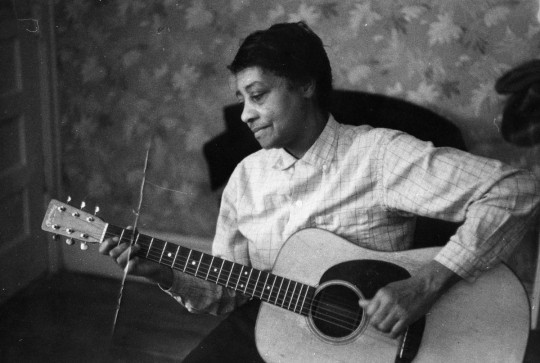
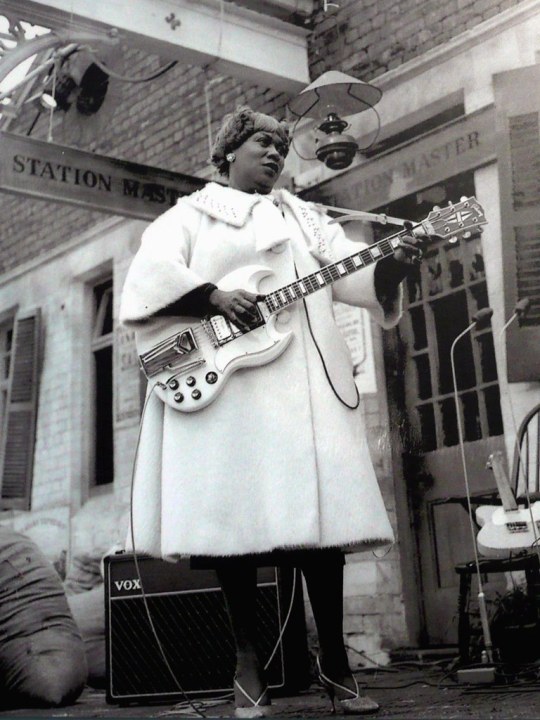

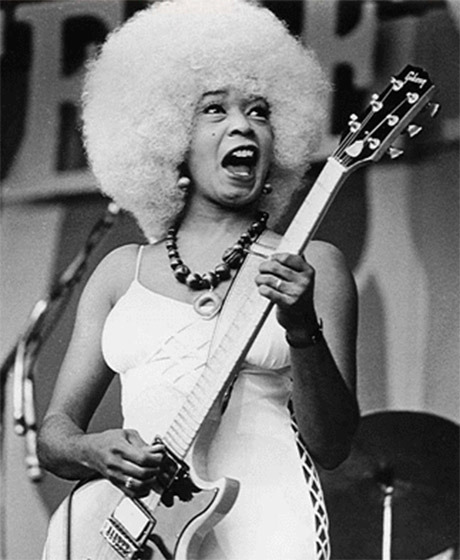
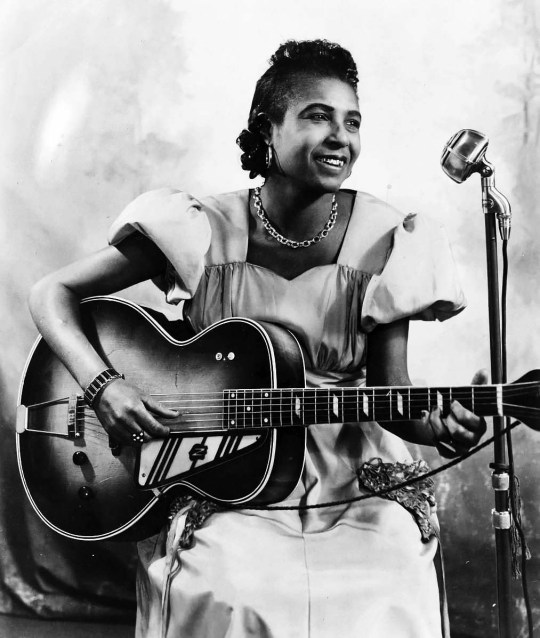

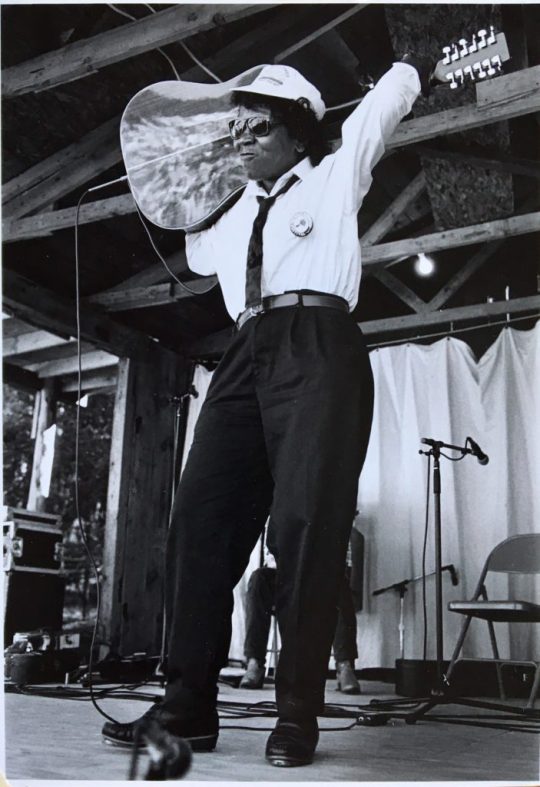
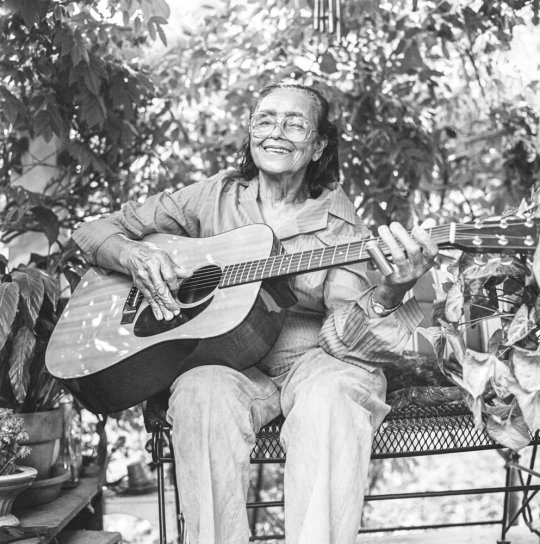
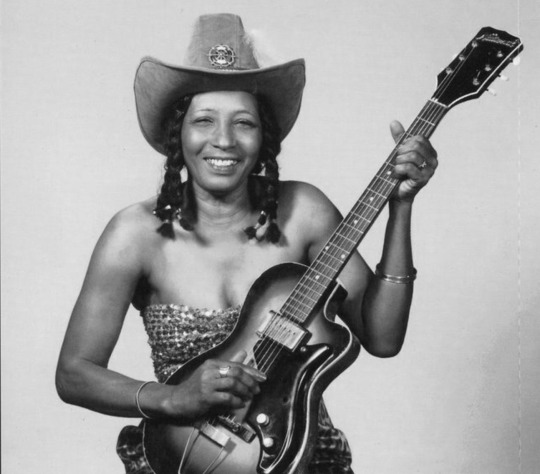
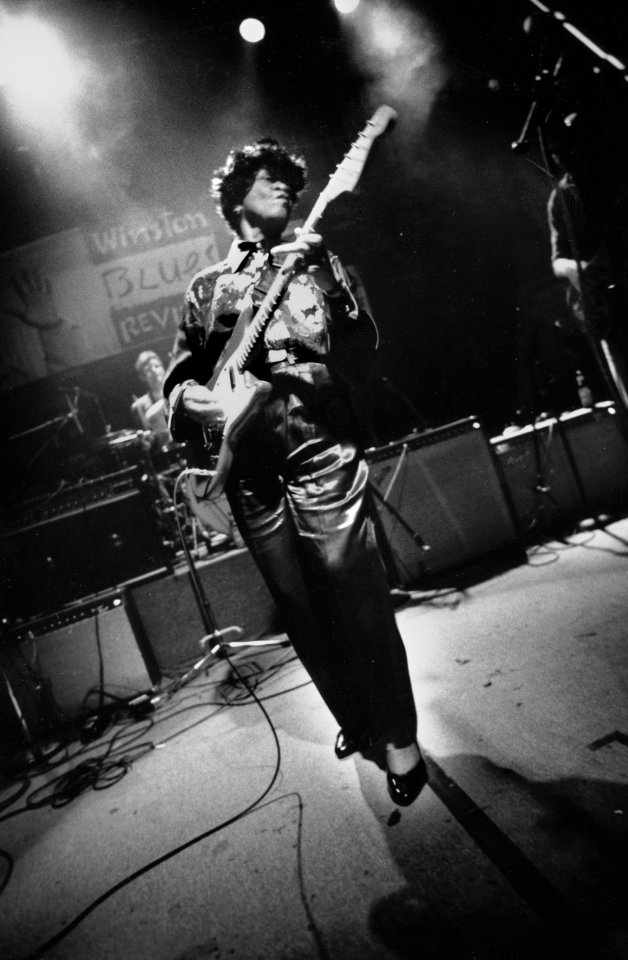
Black American Music Month
• ELIZABETH “LIBBA” COTTEN - She was a maid at 9, wrote a hit song at 11 — and won a Grammy at 93. Not to mention she was a self-taught left-handed guitarist who played a guitar strung for a right-handed player, but played it upside down. This position meant that she would play the bass lines with her fingers and the melody with her thumb.
• SISTER ROSETTA THARPE- The “Godmother of Rock & Roll.” She helped shape modern popular music, was one of the few Black female guitarists to ever find commercial success and the first artist to blend gospel with the secular.
• ODETTA HOLMES - Known as “The Voice of the Civil Rights Movement.” In 1963, she sang for the masses on the steps of the Lincoln Memorial at the March on Washington. Her musical repertoire consisted largely of American folk music, blues, jazz, and spirituals.
• PEGGY JONES - Nicknamed “Lady Bo” played rhythm guitar in Bo Diddley's band in the late 1950s and early 1960s, becoming one of the first (perhaps the first) female rock guitarists in a highly visible rock band. Sometimes called the “Queen Mother of Guitar.”
• LIZZIE “MEMPHIS MINNIE” DOUGLAS - Known as the “Queen of the Blues,” was a singer, guitarist, and songwriter. Her title stems from her legacy of successfully recording music across four decades as well as being the lone female voice in a male dominated blues scene.
• NORMA JEAN WOFFORD - Nicknamed “The Duchess” by Bo Diddley, she was the second female guitarist in Diddley's backing band.
• ALGIA MAE HINTON - She was widely recognized as a master picker and buckdancer in the Piedmont styles. She would often play her guitar behind her head while buck dancing.
• ETTA BAKER - She was a Piedmont blues/folk guitarist and singer who began playing the guitar at age 3. Taught by her father, long-time Piedmont player Boone Reid, Etta played 6-string and 12-string acoustic guitar, and 5-string banjo. She was a master of the blues guitar style that became popular in the southern piedmont after the turn of the century.
• JESSIE MAE HEMPHILL - A legend of hill country blues guitar. She grew up in a lineage of familial fife-and-drums bands from northern Mississippi, rose to popularity in the mid-1980s and had a fruitful career during which she performed around the globe, traveling mostly on her own. She played in open tunings and, having started as a drummer, had a percussive guitar style that included slapping and banging the instrument. She would also tie a tambourine around her calf, which, together with her strumming-and-drumming guitar work, gave her performance the sound of a one-woman-band.
• BEVERLY “GUITAR” WATKINS - One part soul singer, one part rockin' roadhouse mama, and one part gifted songwriter. She's been chronically under-recorded for a woman with her résumé, performing with the likes of James Brown, Ray Charles and Otis Redding. She didn’t record her first album until she was 60. Her blistering licks on a 1962 red Fender Mustang earned her the well-deserved nickname “Guitar.” She gon’ put on a show:
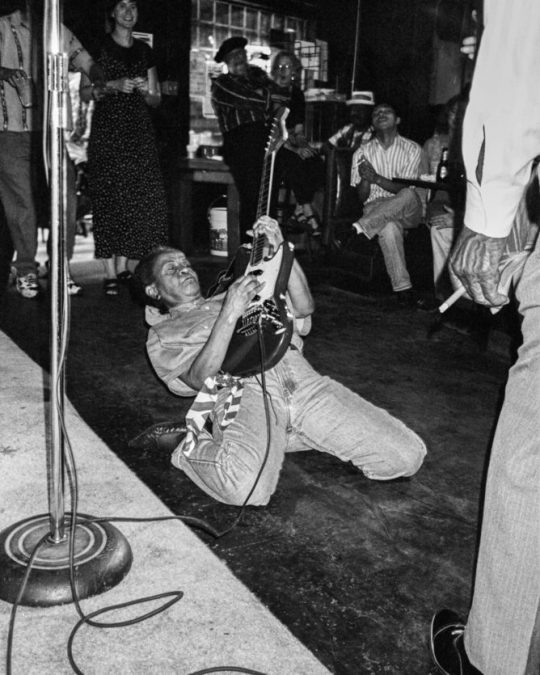
One more for good measure:
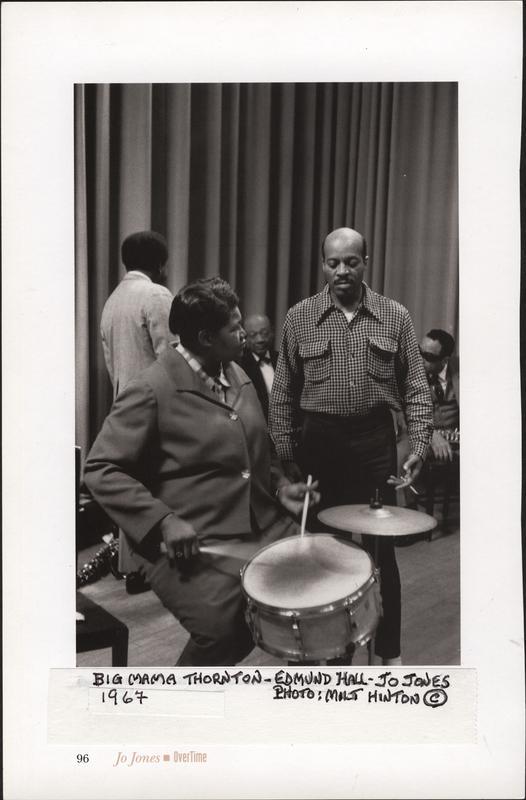

• WILLIE MAE “BIG MAMA” THORNTON - Also referred to as “The Godmother of Rock & Roll.” She was a blues singer, songwriter, self-taught drummer, and harmonica player. She was the first to record "Hound Dog", in 1952, which became her biggest hit, staying seven weeks at number one on the Billboard R&B chart in 1953 and selling almost two million copies. She also helped to shape the sound and style of “Texas-blues,” an evolving blues sub-genre known to incorporate swing and big band elements.
#black american music month#elizabeth cotten#elizabeth libba cotten#sister rosetta tharpe#odetta holmes#peggy jones#memphis minnie#norma jean wofford#algia mae hinton#etta baker#jessie mae hemphill#beverly guitar watkins#big mama thornton#black american musicians
1K notes
·
View notes
Text
“All I’m asking is for a little respect when I come home “
Hello!
On todays post I'm going talk about “The Queen of the Soul“.
Aretha Franklin is an iconic singer in the Afro-American music community. She has sold over 80 million records and remains the best-selling female artist of all time. She sang gospel, soul-funk, blues and jazz and I decided to talk about her because I thinks is a great exemple of how to integrate Afro-American elements in contemporary music.
Aretha Franklin grew up in Memphis- Tennessee in the South of The United States. Memphis is the town with the most Afro-Americans. Indeed, 63,3 % of the population is Afro-American. Her father was a minister in the local church and she joined the church’s choir with her two sisters. That is how she beg&an to sing and it led to the release of her first album untitled “The Gospel Soul of Aretha Franklin“ at only fourteen years old. But she started to be noticed when she moved to New York City. And it is only in 1980 that Aretha became the first ever woman to join the Rock and Roll Hall of Fame. She released her first single in 1960 untitled “Today I Sing the Blues“.
“Respect“ is one of the most danceable and famous song she ever performed. It is a song which shows her feminist engagement but she didn’t wrote it. She changed it and turned a macho’s song to a feminist’s song: A true anthem to freedom. However, “Respect“ is not only an ode to femininity and freedom but Aretha Franklin also wanted to send a message to her audience and her people immediately grasped her confidence and the message behind her words. Indeed, in the lyrics she spelled the word respect “ All I’m asking is for a little respect when I come home “. Here she does to only refers to inequalities between men and women but also to segregation. Indeed, she was an activist long before the song. She even went on tour with Martin Luther King. The writer Gerri Hershey wrote in Nowhere to Run: The Story of Soul Music : “In Black neighborhoods and white universities, her hits came like cannonballs, blowing holes in the stylized bouffant and chiffon Motown sound, a strong new voice with a range that hit the heavens and a center of gravity that was very close to Earth.”
“The Queen of the Soul“ shaped generations of music. She changed popular music forever and Jack Hamilton, a pop music critic sais I quote: “There is before Aretha Franklin and after“. She mixed gospel, jazz, blues, R and B and took on what we called Rock and Roll. She had the ability of embody the Afro-American musical traditions and represent them on stage.
Aretha Franklin influenced countless other artists such as Beyoncé and Rihanna by caring her passion and soul and legacy into her music.
6 notes
·
View notes
Photo

Today we remember the passing of Willie Mae “Big Mama” Thornton who Died: July 25, 1984 in Los Angeles, California
Willie Mae Thornton (December 11, 1926 – July 25, 1984), better known as Big Mama Thornton, was an American rhythm-and-blues singer and songwriter. She was the first to record Leiber and Stoller's "Hound Dog", in 1952,which became her biggest hit, staying seven weeks at number one on the Billboard R&B chart in 1953 and selling almost two million copies. Thornton's other recordings included the original version of "Ball and Chain", which she wrote.
Her recording of Hound Dog, written by Jerry Leiber and Mike Stoller in 1952, and later recorded by Elvis Presley, reached Number 1 on the Hot R&B/Hip-Hop Songs chart. According to Maureen Mahon, a music professor at New York University, "the song is seen as an important beginning of rock-and-roll, especially in its use of the guitar as the key instrument".
Thornton's birth certificate states that she was born in Ariton, Alabama, but in an interview with Chris Strachwitz, she claimed Montgomery, Alabama, as her birthplace, probably because Montgomery was better known than Ariton. She was introduced to music in a Baptist church, where her father was a minister and her mother a singer. She and her six siblings began to sing at early ages. Her mother died young, and Willie Mae left school and got a job washing and cleaning spittoons in a local tavern. In 1940 she left home and, with the help of Diamond Teeth Mary, joined Sammy Green's Hot Harlem Revue and was soon billed as the "New Bessie Smith". Her musical education started in the church but continued through her observation of the rhythm-and-blues singers Bessie Smith and Memphis Minnie, whom she deeply admired.
Thornton's career began to take off when she moved to Houston in 1948. "A new kind of popular blues was coming out of the clubs in Texas and Los Angeles, full of brass horns, jumpy rhythms, and wisecracking lyrics." In 1951 she signed a recording contract with Peacock Records and performed at the Apollo Theater in 1952. Also in 1952, while working with another Peacock artist Johnny Otis, she recorded "Hound Dog", the first record produced by its writers Jerry Leiber and Mike Stoller. The pair were present at the recording, with Leiber demonstrating the song in the vocal style they had envisioned; "We wanted her to growl it," Stoller said, which she did. Otis played drums, after the original drummer was unable to play an adequate part. The record sold more than half a million copies, and went to number one on the R&B chart, helping to bring in the dawn of rock 'n' roll. Although the record made Thornton a star, she saw little of the profits.
On Christmas Day 1954 in a theatre in Houston, Texas, she witnessed fellow performer Johnny Ace, also signed to Duke and Peacock record labels, accidentally shoot and kill himself while playing with a .22 pistol. Thornton continued to record for Peacock until 1957 and performed in R&B package tours with Junior Parker and Esther Phillips.
Thornton's success with "Hound Dog" was followed three years later by Elvis Presley recording his hit version of the song. His recording at first annoyed Leiber who wrote, "I have no idea what that rabbit business is all about. The song is not about a dog, it's about a man, a freeloading gigolo." But Elvis' version sold ten million copies, so today few fans know that "Hound Dog" began as "an anthem of black female power." Similarly, Thornton originally recorded her song "Ball 'n' Chain" for Bay-Tone Records in the early 1960s, "and though the label chose not to release the song... they did hold on to the copyright"—which meant that Thornton missed out on the publishing royalties when Janis Joplin recorded the song later in the decade. However, in a 1972 interview, Thornton acknowledged giving Joplin permission to record the song and receiving royalty payments from its sales.
As her career began to fade in the late 1950s and early 1960s, she left Houston and relocated to the San Francisco Bay area, "playing clubs in San Francisco and L.A. and recording for a succession of labels", notably the Berkeley-based Arhoolie Records. In 1965, she toured with the American Folk Blues Festival in Europe, where her success was notable "because very few female blues singers at that time had ever enjoyed success across the Atlantic." While in England that year, she recorded her first album for Arhoolie, Big Mama Thornton – In Europe. It featured backing by blues veterans Buddy Guy (guitar), Fred Below (drums), Eddie Boyd (keyboards), Jimmy Lee Robinson (bass), and Walter "Shakey" Horton (harmonica), except for three songs on which Fred McDowell provided acoustic slide guitar.
In 1966, Thornton recorded her second album for Arhoolie, Big Mama Thornton with the Muddy Waters Blues Band – 1966, with Muddy Waters (guitar), Sammy Lawhorn (guitar), James Cotton (harmonica), Otis Spann (piano), Luther Johnson (bass guitar), and Francis Clay (drums). She performed at the Monterey Jazz Festival in 1966 and 1968. Her last album for Arhoolie, Ball n' Chain, was released in 1968. It was made up of tracks from her two previous albums, plus her composition "Ball and Chain" and the standard "Wade in the Water". A small combo, including her frequent guitarist Edward "Bee" Houston, provided backup for the two songs. Janis Joplin and Big Brother and the Holding Company's performance of "Ball 'n' Chain" at the Monterey Pop Festival in 1967 and the release of the song on their number one album Cheap Thrills renewed interest in Thornton's career.
By 1969, Thornton had signed with Mercury Records, which released her most successful album, Stronger Than Dirt, which reached number 198 in the Billboard Top 200 record chart. Thornton had now signed a contract with Pentagram Records and could finally fulfill one of her biggest dreams. A blues woman and the daughter of a preacher, Thornton loved the blues and what she called the "good singing" of gospel artists like the Dixie Hummingbirds and Mahalia Jackson. She had always wanted to record a gospel record, and with the album Saved (PE 10005), she achieved that longtime goal. The album includes the gospel classics "Oh, Happy Day," "Down By The Riverside," "Glory, Glory Hallelujah," "He's Got the Whole World in His Hands," "Lord Save Me," "Swing Low, Sweet Chariot," "One More River" and "Go Down Moses".
By then, the American blues revival had come to an end. While the original blues acts like Thornton mostly played smaller venues, younger people played their versions of blues in massive arenas for big money. Since the blues had seeped into other genres of music, the blues musician no longer needed impoverishment or geography for substantiation; the style was enough. While at home the offers became fewer and smaller, things changed for good in 1972, when Thornton was asked to rejoin the American Folk Blues Festival tour. She thought of Europe as a good place for herself, and, with the lack of engagements in the United States, she agreed happily. The tour, beginning on March 2, took Thornton to Germany, France, Switzerland, Austria, Italy, the Netherlands, Denmark, Norway, Finland, and Sweden, where it ended on March 27 in Stockholm. With her on the bill were Eddie Boyd, Big Joe Williams, Robert Pete Williams, T- Bone Walker, Paul Lenart, Hartley Severns, Edward Taylor and Vinton Johnson. As in 1965, they garnered recognition and respect from other musicians who wanted to see them.
In the 1970s, years of heavy drinking began to damage Thornton's health. She was in a serious auto accident but recovered to perform at the 1973 Newport Jazz Festival with Muddy Waters, B.B. King, and Eddie "Cleanhead" Vinson (a recording of this performance, The Blues—A Real Summit Meeting, was released by Buddha Records). Thornton's last albums were Jail and Sassy Mama for Vanguard Records in 1975. Other songs from the recording session were released in 2000 on Big Mama Swings. Jail captured her performances during mid-1970s concerts at two prisons in the northwestern United States. She was backed by a blues ensemble that featured sustained jams by George "Harmonica" Smith and included the guitarists Doug MacLeod, Bee Houston and Steve Wachsman; the drummer Todd Nelson; the saxophonist Bill Potter; the bassist Bruce Sieverson; and the pianist J. D. Nicholson. She toured extensively through the United States and Canada, played at the Juneteenth Blues Fest in Houston and shared the bill with John Lee Hooker. She performed at the San Francisco Blues Festival in 1979 and the Newport Jazz Festival in 1980. In the early 1970s, Thornton's sexual proclivities became a question among blues fans. Big Mama also performed in the "Blues Is a Woman" concert that year, alongside classic blues legend Sippie Wallace, sporting a man's three-piece suit, straw hat, and gold watch. She sat at center stage and played pieces she wanted to play, which were not on the program. Thornton took part in the Tribal Stomp at Monterey Fairgrounds, the Third Annual Sacramento Blues Festival, and the Los Angeles Bicentennial Blues with BB King and Muddy Waters. She was a guest on an ABC-TV special hosted by actor Hal Holbrook and was joined by Aretha Franklin and toured through the club scene. She was also part of the award-winning PBS television special Three Generations of the blues with Sippie Wallace and Jeannie Cheatham.
Thornton was found dead at age 57 by medical personnel in a Los Angeles boarding house on July 25, 1984. She died of heart and liver disorders due to her longstanding alcohol abuse.
19 notes
·
View notes
Note
i really love your headcanons and i hope this hasn't been asked before but what abt the types of music or even specific artists u think the boys (or girls too!) would listen to? me personally i only have a few ideas but i always see bobby listening to 90s music... and i feel like gary might listen to a lot of rock
hi anon! thank you so much ❤️
now here’s the thing. i don’t know a lot of european music. barely know british artists that aren’t dead, with the exception of arctic monkeys. so if you guys know artists that sound like the ones i’m citing, fantastic, ‘cause i don’t know them 😬 😬 😬
you know, i think about the year they were born, and relevate that about their preferences. and you know, i’m there with you. i think i mentioned a couple of times about bobby and the 90′s hip hop/r&b. so much of that happening on his music collection. i headcanon a poster of tupac on his living room, in his original apartment. girls like lil kim and eve being the women he had crushes, before he had his punk phase and fell for girls like joan jett and lita ford, and was listening to sum 41. maybe even some old 1960′s reggae too. but i don’t see it happening as much as the others. it’s more of a family thing. in his favorite punk bands i included dead kennedys, blink 182, sum 41, bad religion, and i stand by it.
definitely loads of rock for gary, for sure! no doubt in my mind that’s his style and i think he’s still in the “i don’t like anything else” phase. for him, i headcanon arctic monkeys, hard rock like ‘black stone cherry’, ‘halestorm’ and others of that type. when i think about gary i think about hard rock bands from the late 90′s and early 2000′s like blink 182, goofy green day and sum 41. i wanna include 80′s horny rock. you know the ones! every guy flipping their hair to talk about an ass, a girl, sex, or all of them combined has a special place in his playlist. not the bands’ whole discography, but those specific songs, like ‘cherry pie’.
chelsea loves ariana grande. that’s just... there’s pink, high pitch, plumes, 90′s aesthetic, ‘thank u next’. i reckon chelsea goes for pop like ed sheeran, and pop girls like ari and... who else is pop? i’m not quite sure.
lottie might dress in black and be a sorceress, but i don’t think she digs nothing too dark. when i think about her, i see dorothy’s ‘wicked ones’ song. but that’s as heavy as she goes. maybe something like ‘the pretty reckless’, but i reckon that’s her limit. nothing like ariana grande i don’t think, but maybe unexpected pop for sure. lottie looks to me like the kind of girl that listens to “this year’s hits” and is alright about it.
noah is all about the 80′s rock and honestly? when i think about noah vibing to something, ‘ain’t no sunshine’ comes to mind. bill withers really did something with those lyrics, and i know ‘toto’ has a special place in noah’s heart, but that’s the energy i feel belongs to book boy. i’m not the most versed in this field, but ‘ben e. king’, b.b king, luther allison. all that jazz vibe but with lots of heartbreak. anything that sounds like the 80′s romantic rock is also in his playlist. ooh, and ‘queen’. no one changes my mind about noah vibing to queen and even goofing around about it.
kassam. on his story, a year ago, i wrote down metal, among other things. this boys gives me the vibe of lots of heavy music influencing his own. initially i said metallica, and i stand by that, but also, i would love to see kassam casually vibing to ‘papa roach’. and i have to include other dj’s, like nina kraviz, his crush, and others like ‘the chemical brothers’ and ‘daft punk’. older more experiencied dj’s, and some experimental new ones.
carl. a freaking wild card! carl can be the type that listens to heavy death metal or go for smooth jazz all day, every day. if i’m honest, i think he goes for heavy things. it seems he puts out his stress into getting deaf while listening to music, but i could be wrong. he really is a wild card. and if i have to guess something, i would say he’s ecletic. he’s not headbanging in concerts, but he’s listening to heavy stuff while working on something complicated, awkwardly mouthing the lyrics. and when he wants to chill, calm genres are his thing, like blues.
lucas. hard rock from any decade. he has mad respect for those bands from the 80′s but can enjoy a modern version that homages the older ones. highlights include ac/dc, led zepellin, mötley crüe, scorpions, kiss. his revolting times include linkin park (no one can convince me lucas wasn’t the type) and slipknot. he’s kinda over slipknot now, but had a hard time with chester’s death.
henrik. I HATE TO BE THAT PERSON, but he does like reggae. i would like to think he keeps it traditional and not ‘hm hm chaka hm hm chaka”. so bob marley, peter tosh, bunny waiter. henrik might vibe to almost everything that is fun or tranquil. he has a genre for every mood. he’s also a headbanger, DON’T AT ME. he must be. i want him to be! pop is part of the repertoire too. but you know, artists like beyonce and bruno mars.
priya. r&b mainly. lots of 90′s r&b and rap, girls that paved the way to new female rappers and the ones who paved the way back for newsies, like nicki minaj. priya has mad respect for her. and i would like to think she likes horny rap like thee stallion. digs cardi b, that’s canon, and playful ones like doja cat too. has the biggest crush on bruno mars and definitely likes cheeky guys because of him.
ibrahim. mainly horny r&b from late 90′s and early 2000′s. like every pony, usher, thong and more! i can see ibrahim dancing to a lot of the 90′s hip hop, like run dmc. if he digs dr. dre, busta and lil’ wayne i’ll be falling for him faster than he can say ‘beaver!’.
marisol. latin music. reggaeton before it was mainstream. old ballads like luis miguel, alejandro sanz and julio iglesias. she probably grew up in a house where her mother and aunties loved those men singing romantic songs to the crowd. she started dancing at an young age, so the ballroom songs from the time: 2003. ricky martin, christina aguilera. (don’t quote me on this, but i was doing ballroom dance and there was a lot of those weird remixes involving pop singers, and those were the main ones. don’t tell anyone about it tho).
#litg gary#litg lucas#litg carl#litg bobby#litg henrik#litg kassam#litg noah#litg priya#litg marisol#litg lottie#litg#litg chelsea#litg ibrahim#litg s2#litg season 2#love island the game#love island the game season 2#group asks
30 notes
·
View notes
Text
Black bi/lesbian women
Day 1 - Gertrude “Ma” Rainey (1886-1939)
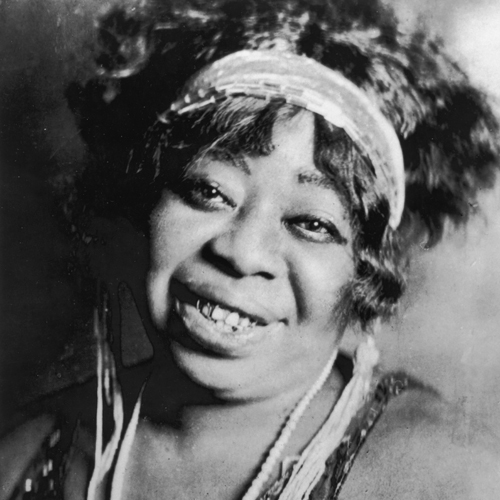
Ma Rainey was the first Vaudeville entertainer to incorporate the blues into her performances, which led to her to – perhaps justifiably – become known as the “Mother of the Blues.” Although she was married, Rainey was known to take women as lovers, and her song “Prove It on Me Blues” directly references her preference for male attire and female companionship. Rainey often found herself in trouble with the police for her lesbian behavior, including an incident in 1925 when she was arrested for taking part in an orgy at home involving women in her chorus. Bessie Smith bailed her out of jail.
Day 2 - Zora Neale Hurston (1891–1960)
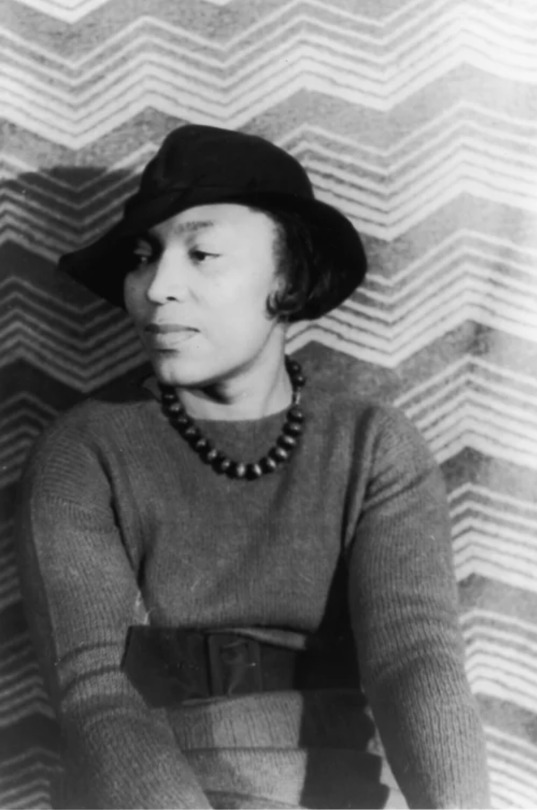
Zora Neale Hurston was an American folklorist, anthropologist, and author during the Harlem Renaissance. During her lifetime, she published four novels and more than 50 short stories, plays and essays. She is perhaps best known for her novel Their Eyes Were Watching God, published in 1937. Today, nearly every black woman writer of significance – including Maya Angelou, Toni Morrison, and Alice Walker – acknowledges Hurston as a key influence. Although she was never public about her sexuality, the book Wrapped in Rainbows, the first biography of Zora Neale Hurston in more than 25 years, explores her deep friendships with luminaries such as Langston Hughes, her sexuality and short-lived marriages, and her mysterious relationship with vodou.
Day 3 - Bessie Smith (1894-1937)
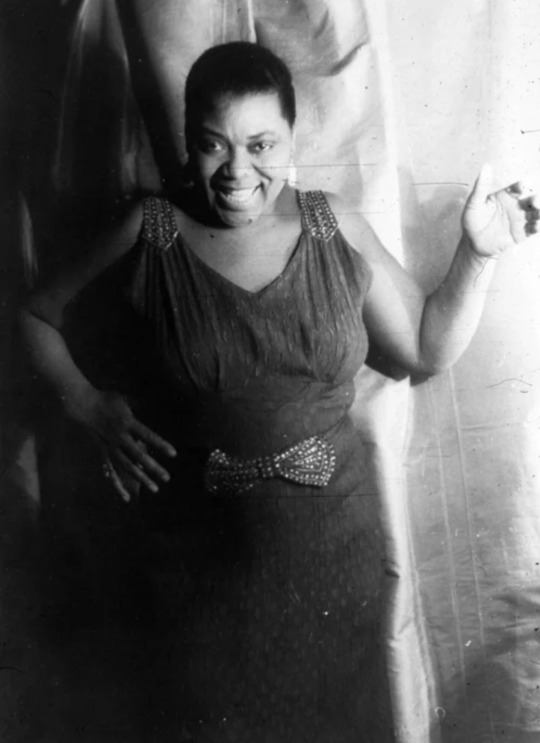
Widely referred to as The Empress of the Blues, Bessie Smith is considered one of the most popular female blues singers of the 1920s and 1930s and is credited, along with Louis Armstrong, as a major influence on jazz vocalists to this day. Bessie Smith began her professional career in 1912 by singing with Ma Rainey and subsequently performed in various touring minstrel shows and cabarets. As a solo artist, Smith was an integral part of Columbia’s Race Records, and her albums each sold 20,000 copies or more. Although married to a man named Jack Gee, Smith had an ongoing affair with a chorus girl named Lillian Simpson.
Day 4 - Mabel Hampton (1902–1989)
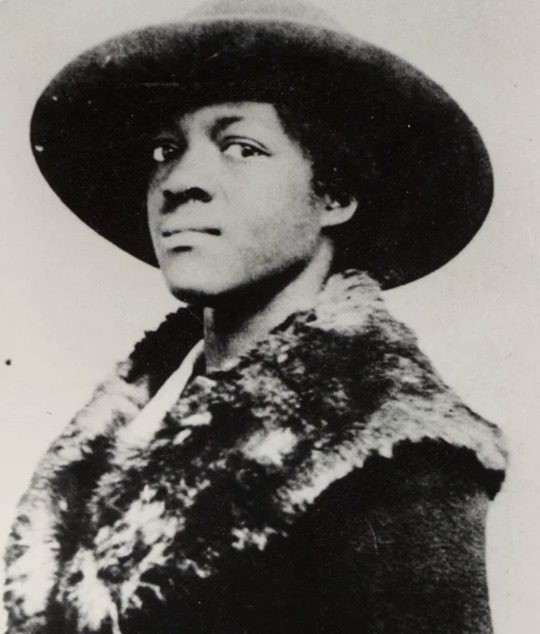
Mabel Hampton was a dancer during the Harlem Renaissance and later became an LGBT historian, philanthropist and activist. She met her partner, Lillian Foster, in 1932 and the two stayed together until Foster’s death in 1978. Hampton marched in the first National Gay and Lesbian March on Washington, and she appeared in the films Silent Pioneers and Before Stonewall. In 1984, Hampton spoke at New York City’s Lesbian and Gay Pride Parade. Hampton’s collection of memorabilia, ephemera, letters and other records documenting her history are housed at the Lesbian Herstory Archives and provide a window into the lives of black women and lesbians during the Harlem Renaissance.
Day 5 - Josephine Baker (1906–1975)

Josephine Baker was the 20th century’s “first black sex symbol.” An American dancer, singer and actress, Baker renounced her American citizenship in 1937 to become French. Despite the fact she was based in Europe, she participated in the American Civil Rights Movement in her own way. She adopted adopting 12 multi-ethnic orphans (long before Angelina Jolie) whom she called the “Rainbow Tribe,” she refused to perform for segregated audiences (which helped to force the integration of performance venues in the United States) and she was the only woman invited to speak at the March on Washington with Martin Luther King, Jr. Although she was married four times, her biographers have since confirmed her multiple affairs with women, including Mexican artist Frida Kahlo.
Day 6 - Gladys Bentley (1907-1960)
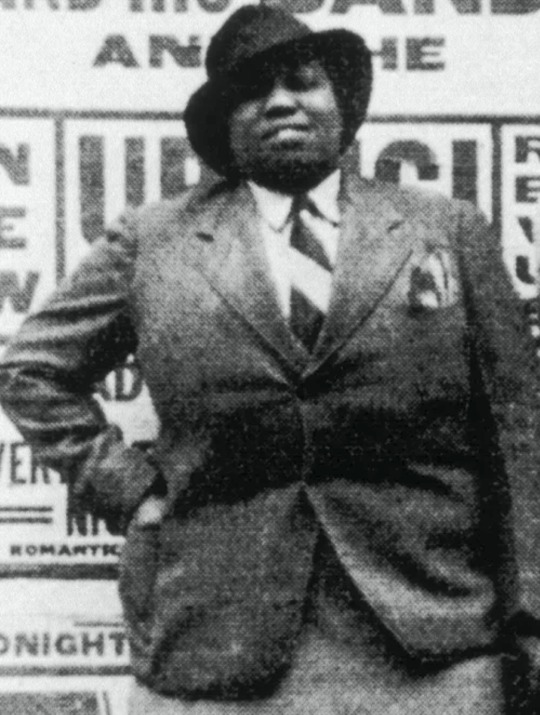
Gladys Bentley was an imposing figure. She was a 250-pound, masculine, dark-skinned, deep-voiced jazz singer who performed all night long at Harlem’s notorious gay speakeasies during the Harlem Renaissance while wearing a white tuxedo and top hat. Bentley was notorious for inventing obscene lyrics to popular songs, performing with a chorus line of drag queens behind her piano, and flirting with women in her audience from the stage. Unlike many in her day, she lived her life openly as a lesbian and claimed to have married a white woman in Atlantic City. An article in Ebony magazine quoted her as saying, “It seems I was born different. At least, I always thought so …. From the time I can remember anything, even as I was toddling, I never wanted a man to touch me.”
Day 7 - Lorraine Hansberry (1930–1965)

Lorraine Hansberry was an African-American playwright and author. Her best known work, A Raisin in the Sun, was inspired by her family’s own battle against racial bias in Chicago. Hansberry explored controversial themes in her writings in addition to racism in America, including abortion, discrimination, and the politics of Africa. In 1957 she joined the lesbian organization Daughters of Bilitis and contributed letters to their magazine, The Ladder, that addressed feminism and homophobia. While she addressed her lesbian identity in the articles she wrote for the magazine, she wrote under the initials L.H. for fear of being discovered as a black lesbian.
Day 8 - Audre Lorde (1934–1992)
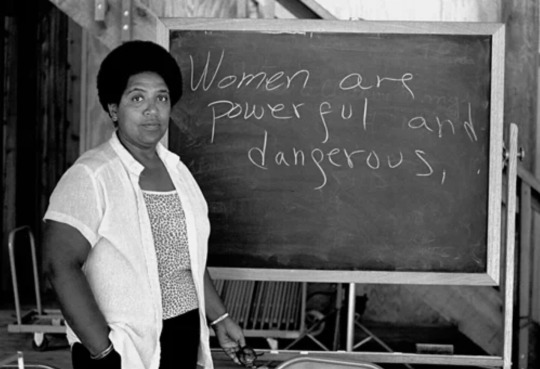
In her own words, Audre Lorde was a “black, lesbian, mother, warrior, poet.” Lorde began writing poetry at age 12 and published her first poem in Seventeen magazine at age 15. She helped found Kitchen Table: Women of Color Press, the world’s first publisher run by women of color, in 1980. Her poetry was published regularly throughout her life and she served as the State Poet of New York from 1991 to 1992. Lorde explored issues of class, race, age, gender and – after a series of cancer diagnoses — health, as being fundamental to the female experience. She died of liver cancer in 1992.
Day 9 - Barbara Jordan (1936–1996)
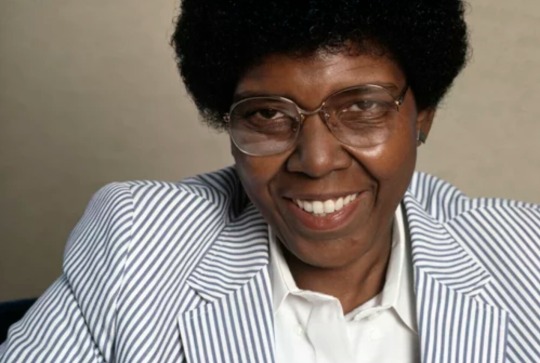
Representative Barbara Jordan (D-Texas) was the first African-American woman elected to Congress from a southern state. In 1976, she delivered the keynote address at the Democratic National Convention, marking the first time an African-American woman had ever done so. Her speech has since been ranked as one of the top 100 American Speeches of the 20th century and is considered by some historians to be among the best convention keynote speeches in modern history. Although Jordan never publicly acknowledged her sexual orientation, her Houston Chronicle obituary mentioned her longtime companion of more than 20 years, Nancy Earl. Her legacy inspired the Jordan Rustin Coalition, a Los Angeles-based organization dedicated to the empowerment of Black LGBT people and families.
Day 10 - June Jordan (1936-2002)
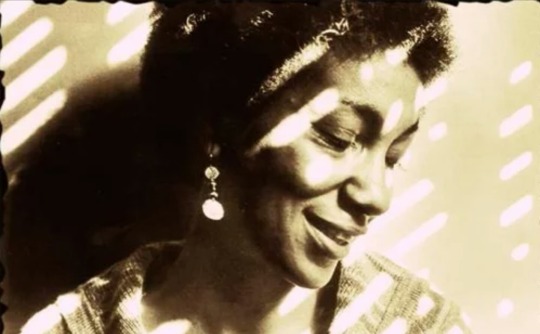
June Jordan was one of the most widely-published and highly-acclaimed African-American writers of her generation. A poet, playwright, speaker, teacher, journalist and essayist Jordan was also known for her fierce commitment to human rights political activism. Jordan said of her bisexuality, “bisexuality means I am free and I am as likely to want to love a woman as I am likely to want to love a man, and what about that? Isn’t that what freedom implies?” Her influential voice defined the cutting edge of both American poetry and politics during the Civil Rights Movement. She published 27 before her death from breast cancer in 2002 at the age of 65. Three more of her books have been published posthumously.
7K notes
·
View notes
Text
新年快樂! Happy New Year!
I know we’re a little late, but we thought we’d help you celebrate the lunar new year with some queer-themed zodiac content. Find out which queer person from history shares your zodiac sign, and follow the links to learn more with our podcast. Welcome to the Year of the Rat!
Year of the Rat (1960, 1972, 1984, 1996, 2008, 2020)
Jazz-age heiress Henrietta Bingham was known for being the life of the party, including baking her friends themed birthday cakes, and one memorable occasion when she’d played the saxophone while standing on top of a piano. Her lovers included world number one tennis player Helen Jacobs, as well as members of the famously queer Bloomsbury Group: artists Dora Carrington and Stephen Tomlin.
Year of the Ox (1949, 1961, 1973, 1985, 1997, 2009)
Vaslav Nijinsky was considered both the best and most controversial ballet dancer of the early 20th century. He shocked audiences with his skin-tight costumes, and the scandalous themes of his choreography, including depicting masturbation on stage, and had relationships with both men and women.
Year of the Tiger (1950, 1962, 1974, 1986, 1998, 2010)
Known as the godmother of rock and roll, Rosetta Tharpe’s fame brought the music of her black, working-class gospel church to the world. Her sound - especially her distinctive guitar-playing - was a pioneering influence on men like Johnny Cash, Elvis Presley, and Chuck Berry. Rosetta never spoke publicly about her sexuality, but friends say she was attracted to both women and men.
Year of the Rabbit (1951, 1963, 1975, 1987, 1999, 2011)
In 1983, Sally Ride became the first American woman to go to space, inspiring hundreds of thousands of young girls around the world. After she retired as an astronaut, Sally worked with her partner Tam O'Shaughnessy, writing science books for children.
Year of the Dragon (1952, 1964, 1976, 1988, 2000, 2012)
Andrew George Scott, alias Captain Moonlite, was at various times a preacher, a cotton farmer, a campaigner for improved prison conditions, and a bushranger. He is buried in Gundagai, Australia, alongside his partner James Nesbitt, with whom he was, in his words “united by every tie which could bind human friendship …one in hopes, one in heart and soul…”
Year of the Snake (1953, 1965, 1977, 1989, 2001, 2013)
Mary Shelley is best known as the author of Frankenstein, which she wrote when she was just 19, pioneering the genre of science fiction. Mary described herself as “apt to get tousy-mousy for women” - in particular, her best friend Jane Williams. As well as being queer herself, Mary also supported other queer people, helping her friend Doddy, who was assigned female at birth, leave England and start a new life as a married man in France.
Year of the Horse (1942, 1954, 1966, 1978, 1990, 2002)
Harry Allen was the subject of sensationalist newspaper articles through the Pacific Midwest in the early 20th century - partly because he was transgender, and partly because of his tendency to bite cops.
Year of the Sheep (1955, 1967, 1979, 1991, 2003, 2015)
Yoshiya Nobuko was an incredibly successful Japanese author, famous for her stories focussing on relationships between women - both friendships and romances. Nobuko lived for almost 50 years with her partner, Monma Chiyo. In 1957, Nobuko formally adopted Chiyo, because, as she explained “.. the law will not recognize you as a wife. … I aim to get the law reformed.”
Year of the Monkey (1956, 1968, 1980, 1992, 2004, 2016)
Drag king Stormé DeLarverie was considered the mother of New York’s queer community for many decades. Armed with a pistol, she worked as a bouncer at lesbian bars around New York into her 80s, as well as using her talent as a singer to raise money for people living with HIV/AIDS, and women and children suffering domestic violence. Stormé was with her partner Diana for 26 years, and after Diana’s death, carried her photo in her wallet for the rest of her life.
Year of the Rooster (1957, 1969, 1981, 1993, 2005, 2017)
In 1970, drag queen and activist Marsha P. Johnson founded STAR - the Street Transvestite Action Revolutionaries - which aimed to provide food, housing, legal aid, and other necessities to homeless trans youth. Marsha was assigned male at birth, but described herself as living life as a woman, and worked tirelessly to support her trans community.
Year of the Dog (1958, 1970, 1982, 1994, 2006, 2018)
Freddie Mercury joined the band Smile - already featuring Brian May and Roger Taylor - in 1970. Over the next three years, Smile became Queen, releasing their first album in 1973, and with Bohemian Rhapsody reaching number one on UK charts two years later. Freddie lived for the last six years of his life with his partner, Jim Hutton, before dying from AIDS-related complications. He also lived with a huge number of cats, and he would phone home to talk with them when he was on tour.
Year of the Pig (1959, 1971, 1983, 1995, 2007, 2019)
19th-century landowner Anne Lister’s diaries chronicle her many lesbian relationships, from 1806 until her death in 1840. The more explicit parts are written in code, with entries often beginning with a summary of her sexual activity from the night before. For the last six years of her life, Anne lived with her wife Ann Walker, with the two women exchanging rings and taking Communion at church together to represent their marriage.
#year of the rat#lunar new year#chinese new year#queer history#lgbt#lgbtq#why are there no pictures in this post you ask?#because tumblr crashed three times while i was making it
101 notes
·
View notes
Photo
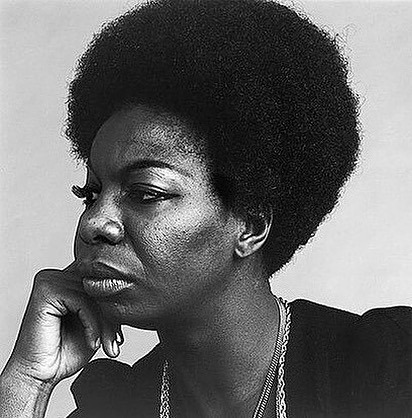
Tday In History Nina Simone, known as the “High Priestess of Soul,” was born in Tryon, NC, on this date February 21, 1933. Nina Simone studied classical piano at the Juilliard School in New York City. Performing in night clubs, she turned her interest to jazz, blues and folk music and released her first album in 1957, scoring a Top 20 hit with the track “I Loves You Porgy.” In the 1960s. Simone became known as the voice of the Civil Rights Movement. She wrote “Mississippi Goddam” in response to the 1963 assassination of Medgar Evers and the Birmingham church bombing that killed four young African American girls. She also penned “Four Women,” chronicling the complex histories of a quartet of African American female figures, and “Young, Gifted and Black,” borrowing the title of a play by Hansberry, which became a popular anthem. After the assassination of Reverend Martin Luther King Jr. in 1968, Simone’s bassist Greg Taylor penned “Why (The King of Love Is Dead),” which was performed by the singer and her band at the Westbury Music Festival. “So while you’re imitating Al Capone, I’ll be Nina Simone and defacating on your microphone” - Lauryn Hill CARTER™️ Magazine carter-mag.com #wherehistoryandhiphopmeet #historyandhiphop365 #cartermagazine #carter #ninasimone #blackhistorymonth #blackhistory #history #staywoke https://www.instagram.com/p/Co6_gx-uDzA/?igshid=NGJjMDIxMWI=
#wherehistoryandhiphopmeet#historyandhiphop365#cartermagazine#carter#ninasimone#blackhistorymonth#blackhistory#history#staywoke
67 notes
·
View notes
Text
Pearl Bailey

Pearl Mae Bailey (March 29, 1918 – August 17, 1990) was an American actress and singer. After appearing in vaudeville she made her Broadway debut in St. Louis Woman in 1946. She won a Tony Award for the title role in the all-black production of Hello, Dolly! in 1968. In 1986, she won a Daytime Emmy award for her performance as a fairy godmother in the ABC Afterschool Special, Cindy Eller: A Modern Fairy Tale.
Her rendition of "Takes Two to Tango" hit the top ten in 1952. She received the Screen Actors Guild Life Achievement Award in 1976 and the Presidential Medal of Freedom on October 17, 1988.
Early life
Bailey was born in Newport News, Virginia, United States, to the Reverend Joseph James and Ella Mae Ricks Bailey. She was raised in the Bloodfields neighborhood of Newport News, Virginia. She graduated from Booker T. Washington High School in nearby Norfolk, Virginia, the first city in the region to offer higher education for black students. Blues singer Ruth Brown from Portsmouth, Virginia was one of her classmates.
She made her stage-singing debut when she was 15 years old. Her brother Bill Bailey was beginning his own career as a tap dancer, and suggested she enter an amateur contest at the Pearl Theatre in Philadelphia. Bailey won and was offered $35 a week to perform there for two weeks. However, the theatre closed during her engagement and she was not paid. She later won a similar competition at Harlem's famous Apollo Theater and decided to pursue a career in entertainment.
Career
Bailey began by singing and dancing in Philadelphia's black nightclubs in the 1930s, and soon started performing in other parts of the East Coast. In 1941, during World War II, Bailey toured the country with the USO, performing for American troops. After the tour, she settled in New York. Her solo successes as a nightclub performer were followed by acts with such entertainers as Cab Calloway and Duke Ellington. In 1946, Bailey made her Broadway debut in St. Louis Woman. For her performance, she won a Donaldson Award as the best Broadway newcomer. Bailey continued to tour and record albums in between her stage and screen performances. Early in the television medium, Bailey guest starred on CBS's Faye Emerson's Wonderful Town.
Her support of female impersonator Lynne Carter led him to credit Bailey with launching his career.
In 1967, Bailey and Cab Calloway headlined an all-black cast version of Hello, Dolly! The touring version was so successful, producer David Merrick took it to Broadway where it played to sold-out houses and revitalized the long running musical. Bailey was given a special Tony Award for her role and RCA Victor made a second original cast album. That is the only recording of the score to have an overture which was written especially for that recording.
A passionate fan of the New York Mets, Bailey sang the national anthem at Shea Stadium prior to game 5 of the 1969 World Series, and appears in the Series highlight film showing her support for the team. She also sang the national anthem prior to Game 1 of the 1981 World Series between the New York Yankees and Los Angeles Dodgers at Yankee Stadium.
Bailey hosted her own variety series on ABC, The Pearl Bailey Show (January – May 1971) which featured many notable guests, including Lucille Ball, Bing Crosby and Louis Armstrong (one of his last appearances before his death).
Following her 1971 television series, she provided voices for animations such as Tubby the Tuba (1976) and Disney's The Fox and the Hound (1981). She returned to Broadway in 1975, playing the lead in an all-black production of Hello, Dolly!. In October 1975, she was invited by Betty Ford to sing for the Egyptian President Anwar Sadat in a White House state dinner, as part of Middle-Eastern peace initiative.
She earned a degree in theology from Georgetown University in Washington, D.C., in 1985 at age 67. Here she was a student of Wilfrid Desan.
Later in her career, Bailey was a fixture as a spokesperson in a series of Duncan Hines commercials, singing "Bill Bailey (Won't You Come Home)". She also appeared in commercials for Jell-O, and Westinghouse.She also did some free -spirited commercials for Paramount Chicken.
In her later years Bailey wrote several books: The Raw Pearl (1968), Talking to Myself (1971), Pearl's Kitchen (1973), and Hurry Up America and Spit (1976). In 1975 she was appointed special ambassador to the United Nations by President Gerald Ford. Her last book, Between You and Me (1989), details her experiences with higher education. On January 19, 1985, she appeared on the nationally televised broadcast of the 50th Presidential Inaugural Gala, the night before the second inauguration of Ronald Reagan. In 1988 Bailey received the Presidential Medal of Freedom from President Reagan.
Personal life
On November 19, 1952, Bailey married the jazz drummer Louie Bellson in London.
They later adopted a son, Tony, in the mid-1950s. A daughter, Dee Dee J. Bellson, was born April 20, 1960. Tony Bellson died in 2004. Dee Dee Bellson died on July 4, 2009, at the age of 49, five months after her father, who died on Valentine's Day 2009.
Bailey, a Republican, was appointed by President Richard Nixon as America's "Ambassador of Love" in 1970. She attended several meetings of the United Nations and later appeared in a campaign ad for President Gerald Ford in the 1976 election.
She was awarded the Bronze Medallion in 1968, the highest award conferred upon civilians by New York City.
Bailey was a very good friend of actress Joan Crawford. In 1969, Crawford and Bailey joined fellow friend Gypsy Rose Lee in accepting a USO Award. In the same year, Bailey was recognized as USO "Woman of the Year". Upon the passing of Crawford in May 1977, Bailey spoke of Crawford as her sister before singing a hymn at her funeral. U.S. Ambassador and American socialite Perle Mesta was another close friend of Bailey. In the waning days of Mesta's life, Bailey visited her frequently and sang hymns for her.
Death
Pearl Bailey died at Thomas Jefferson University Hospital in Philadelphia on August 17, 1990. Following an autopsy, Dr. Emanuel Rubin, professor and chairman of the Department of Pathology at Jefferson Medical College, announced the cause of death as arteriosclerosis, with significant narrowing of the coronary artery. Bailey is buried at Rolling Green Memorial Park in West Chester, Pennsylvania.
Remembrances
The television show American Dad! features Pearl Bailey High School.
The 1969 song "We Got More Soul" by Dyke and the Blazers includes Bailey in its roster of icons.
A dress owned by Bailey is at the National Museum of African American History and Culture.
14 notes
·
View notes
Text
The Shocking Revelation of Female Black Singers 16s | female black singers 16s
(Want to get this conference by email? Here’s the sign-up.)
Auto Show Babe 2013-4061451 – female black singers 1960s | female black singers 1960s
Good morning,
We alpha today with a vote on the bipartisan bound deal, accusations adjoin the artist Ryan Adams, and the end of a Mars departer mission.
The Senate and the House are set to vote today on a bipartisan spending admeasurement that would admeasure $1.38 billion for angry forth the southwestern bound — beneath than what they offered aftermost year and far abbreviate of the $5.7 billion Admiral Trump had requested.
It is conceivably the best backbreaking defeat Mr. Trump has accomplished as president, abnormally in ablaze of the negotiating accomplishment he accustomed while campaigning, our correspondents wrote in a account analysis: “In following of a wall, Admiral Trump ran into one.”
The Senate convenes at 10 a.m. Eastern.
Voices: “We shut bottomward the government for 35 days, we put America through this crisis, we jeopardized our abridgement — for what?” said Senator Richard Durbin of Illinois, a Democrat, who was allotment of the board that adjourned the account deal. “Totally unnecessary.”
President Trump’s above attack ambassador breached a appeal acceding by lying assorted times to prosecutors, a federal adjudicator absitively on Wednesday. Mr. Manafort apprenticed in September to abet with the appropriate admonition analysis into Russian arrest in the 2016 election.
The adjudicator said Mr. Manafort had aria about his contacts with a Russian accessory during the attack and afterwards the election.
What’s next: The accommodation could advance to a harsher abuse for Mr. Manafort aback he is bedevilled abutting ages on two counts of conspiracy. He additionally awaits sentencing for eight added counts in a accompanying artifice case.
Government admiral alleged the Air Force counterintelligence abettor “Wayward Storm,” but her complete name was Monica Elfriede Witt. In an allegation fabricated accessible on Wednesday, she was answerable with two counts of espionage and added crimes afterwards prosecutors said she had defected to Iran to advice ambition her above American colleagues.
The case is amid several in contempo years in which adopted countries accustomed to recruit above American aggressive or intelligence officials.
Jazz Women Of The 1960s | Night Lights Classic Jazz – WFIU … – female black singers 1960s | female black singers 1960s
Background: Why Ms. Witt became disillusioned with the U.S. government charcoal a mystery. She entered the Air Force in 1997 but larboard alive assignment in 2008. At some point, she adapted to Islam, and she is believed to abide in Iran.
Climate change has accelerated melting in the Alps, which has added beck flows and abounding reservoirs in the region. For Switzerland — area hydropower plants accommodate added than bisected the country’s electricity — that can be a acceptable activity in the abbreviate term.
“Today, we account from arctic melting,” one Swiss controlling said.
Looking ahead: In the best term, the aftereffect will crave adaptations. Aback ice retreats to the point that beck flows abatement and ability assembly drops, the valleys carved by glaciers will be exposed. But those may become ideal sites to aggregate and abundance water, confined as a antecedent for advancement power.
In interviews, seven women and added than a dozen assembly declared a arrangement of artful behavior in which Mr. Adams, a abounding singer-songwriter, dangled career opportunities while accompanying advancing changeable artists for sex.
Some say he angry antagonistic aback they declined. He denied the allegations.
F.B.I. investigation: The agency’s above director, Andrew McCabe, ordered an analysis in 2017 of whether Admiral Trump had blocked amends by battlefront James Comey, a new account shows. Amends Department admiral had discussed recruiting chiffonier associates to abolish Mr. Trump from office.
School cutting anniversary: One year afterwards 17 bodies were asleep at a aerial academy in Parkland, Fla., we looked at how some of the survivors became a force for gun-control legislation.
Mars mission ends: Opportunity, the departer that explored the red planet for added than 14 years, is dead, NASA announced. We traced the robot’s 28-mile adventure there.
Aid for Venezuela stalls: The country’s opposition, led by Juan Guaidó, had hoped to force a battle with Admiral Nicolás Maduro by bringing aliment and medical donations into the country. But the government has blocked the aid at the bound with Colombia.
Extended ability in Egypt: The country’s Parliament accustomed measures today that would acquiesce Admiral Abdel Fattah el-Sisi to abide in appointment until 2034. The vote added entrenches Mr. el-Sisi’s complete aphorism and enshrines the military’s ascendancy over the country.
The 16 Most Popular Black Female Singers Of All TIme | MadameNoire – female black singers 1960s | female black singers 1960s
A admonishment to Trump: The House has voted to end aggressive abutment for Saudi Arabia’s war in Yemen, a attenuate move to complete presidential war powers. A agnate resolution that the Senate anesthetized in December died in the aftermost Congress afterwards the Republican House administration blocked a vote.
FEMA resignation: Brock Long, the ambassador of the Federal Emergency Management Agency, has accommodated afterwards two years. During his tenure, the bureau was accepted for its acknowledgment to Hurricane Harvey but acutely criticized for its administration of Hurricane Maria’s confusion in Puerto Rico.
Philippine journalist’s arrest: Maria Ressa, the co-founder of an online account armpit analytical of Admiral Rodrigo Duterte, was appear on bond today afterwards actuality arrested in a aspersion case she said was politically motivated.
Overlooked obituaries: For Atramentous History Month, our Overlooked alternation is absorption on arresting atramentous men and women who didn’t accept obituaries in The Times aback they died. The latest is Dudley Randall, a librarian who started the Broadside Press out of his home in Detroit in the 1960s, giving articulation to about 200 atramentous poets.
Late-night comedy: Stephen Colbert was black with Washington and the accord to anticipate a government shutdown: “Where’s the basement bill? Where’s the clearing bill? Where’s the fix on bloom care? We are adulatory — or declared to be adulatory — that they’re abutting to a accord to accomplish the complete minimum: accepting a government!”
What we’re reading: This article by a adept BBC reporter. Steven Erlanger, The Times’s arch adept contributor in Europe, writes: “Nick Bryant argues cogently that the allegation of Admiral Clinton over the Monica Lewinsky activity fabricated it easier for Donald Trump to become admiral and abundant harder for his wife, Hillary.”
Cook: Make Valentine’s Day appropriate with a amber bedrock block for two.
Listen: The clue “Gun Powder” provides added acquiescently adapted tragedy from the Savannah, Ga., rapper Quando Rondo, Jon Caramanica writes.
See: In the Met Opera’s assembly of “La Fille du Régiment,” Javier Camarena sings a cord of nine aerial C’s as allotment of a blissful aria. There’s a adventitious the admirers will access into ad-lib applause.
Read: “On the Come Up,” the latest from Angie Thomas, debuts at No. 1 on our adolescent developed album best-seller list. Her book “The Hate U Give” has spent 102 weeks on the account and is currently ranked No. 2.
Smarter Living: Should you booty that promotion? Don’t automatically say yes. Booty a footfall aback to assay the action and the doors it could open. But additionally analysis if you accept the abilities to do the job well, whether the timing is appropriate and whether you’ll be hit with added pressure, best assignment hours or biking commitments. You ability be bigger off adage no.
1000+ images about 60's Pop Princesses on Pinterest … – female black singers 1960s | female black singers 1960s
My grandfathering was on a Fulbright scholarship in Oslo in 1960 aback he met Mr. Child, who was stationed there. One night, he alternate from the Childs’ home agitated about an amazing bowl — quiche.
My grandmother waited impatiently for a adventitious to try a bite. But aback an allurement assuredly came, Mrs. Child served a tray of reindeer salami, not quiche. My grandmother still feels the letdown.
Mrs. Child went on to broadcast “Mastering the Art of French Cooking” and corresponded with my grandparents occasionally, best conspicuously on Valentine’s Day. (Here are two of their Valentines.)
As for the salami? “I do not acclaim it,” my grandmother said.
That’s it for this briefing.
Need the absolute Valentine? Nothing says “I adulation you” like (x² ((1 b)y)² z²-1)³-x²z³-ay²z³=0.
See you abutting time.
— Inyoung and Chris
Thank youTo Eleanor Stanford, Chris Harcum and James K. Williamson for the breach from the news. Remy Tumin, on the briefings team, wrote today’s Aback Story. You can ability us at [email protected].
P.S.• We’re alert to “The Daily.” Today’s adventure is about the ceremony of the academy cutting in Parkland, Fla.• Here’s today’s mini crossword puzzle, and a clue: Green booze (5 letters). You can acquisition all our puzzles here. • The Times wants to apprehend from women who accept served in the military, and those who apperceive them.
The Shocking Revelation of Female Black Singers 16s | female black singers 16s – female black singers 1960s | Delightful for you to my blog, on this period I am going to show you about keyword. And from now on, this is actually the very first graphic:
Ev Bessar 2016-02-112273 – female black singers 1960s | female black singers 1960s
Why not consider impression above? is usually in which wonderful???. if you believe therefore, I’l d explain to you a number of graphic again underneath:
So, if you’d like to receive these incredible shots about (The Shocking Revelation of Female Black Singers 16s | female black singers 16s), click on save button to download the pics for your computer. These are available for save, if you’d rather and want to get it, simply click save symbol in the page, and it’ll be immediately downloaded to your laptop computer.} Finally if you like to obtain new and the latest photo related to (The Shocking Revelation of Female Black Singers 16s | female black singers 16s), please follow us on google plus or book mark this website, we try our best to provide daily up grade with all new and fresh shots. We do hope you like staying here. For many updates and latest news about (The Shocking Revelation of Female Black Singers 16s | female black singers 16s) pictures, please kindly follow us on tweets, path, Instagram and google plus, or you mark this page on book mark area, We attempt to present you up grade regularly with all new and fresh photos, love your exploring, and find the best for you.
Thanks for visiting our site, articleabove (The Shocking Revelation of Female Black Singers 16s | female black singers 16s) published . Nowadays we’re excited to declare that we have found an extremelyinteresting topicto be pointed out, that is (The Shocking Revelation of Female Black Singers 16s | female black singers 16s) Many people looking for info about(The Shocking Revelation of Female Black Singers 16s | female black singers 16s) and definitely one of these is you, is not it?
Lot Detail – 1960s-2010s FEMALE SINGER & SONGWRITER SIGNED … – female black singers 1960s | female black singers 1960s
Say It Loud: 16 Black Women in the Black Power Movement Everyone … – female black singers 1960s | female black singers 1960s
Ev Bessar 2016-02-111400 – female black singers 1960s | female black singers 1960s
Dusty Springfield – The Greatest Music Divas Of The 1960s … – female black singers 1960s | female black singers 1960s
Gimme Shelter | BLACK GIRL. VINTAGE DRESS. – female black singers 1960s | female black singers 1960s
The Undeniable Best Black Female Singers of All Time – female black singers 1960s | female black singers 1960s
Mick Jagger's love letters to Marsha Hunt reveal 'secret … – female black singers 1960s | female black singers 1960s
Anje 2015-09-108649 – female black singers 1960s | female black singers 1960s
Black Gospel Music Artists | AllMusic – female black singers 1960s | female black singers 1960s
Ev Bessar 2016-02-111487 – female black singers 1960s | female black singers 1960s
The Greatest Music Divas Of The 1960s – Smooth – female black singers 1960s | female black singers 1960s
from WordPress https://americanartist.club/the-shocking-revelation-of-female-black-singers-16s-female-black-singers-16s/
0 notes
Text

BIG MAMA THORNTON THE ORIGINATOR OFTHE HOUND DOG SONG
Thornton's birth certificate states that she was born in Ariton, Alabama,[5] but in an interview with Chris Strachwitz she claimed Montgomery, Alabama, as her birthplace, probably because Montgomery was better known than Ariton.[6] She was introduced to music in a Baptist church, where her father was a minister and her mother a singer. She and her six siblings began to sing at early ages.[7] Her mother died young, and Willie Mae left school and got a job washing and cleaning spittoons in a local tavern. In 1940 she left home and, with the help of Diamond Teeth Mary, joined Sammy Green's Hot Harlem Revue and was soon billed as the "New Bessie Smith".[6] Her musical education started in the church but continued through her observation of the rhythm-and-blues singers Bessie Smith and Memphis Minnie, whom she deeply admired.
Early career
Thornton's career began to take off when she moved to Houston in 1948. "A new kind of popular blues was coming out of the clubs in Texas and Los Angeles, full of brass horns, jumpy rhythms, and wisecracking lyrics."[9] In 1951 she signed a recording contract with Peacock Records and performed at the Apollo Theater in 1952. Also in 1952, while working with another Peacock artist Johnny Otis, she recorded "Hound Dog", the first record produced by its writers Jerry Leiber and Mike Stoller. The pair were present at the recording,[10] with Leiber demonstrating the song in the vocal style they had envisioned;[11][12] "We wanted her to growl it," Stoller said, which she did. Otis played drums, after the original drummer was unable to play an adequate part. The record sold more than half a million copies, and went to number one on the R&B chart,[13] helping to bring in the dawn of rock 'n' roll.[14] Although the record made Thornton a star, she saw little of the profits.
On Christmas Day 1954 in a theatre in Houston, Texas, she witnessed fellow performer Johnny Ace, also signed to Duke and Peacock record labels, accidentally shoot and kill himself while playing with a .22 pistol.[16] Thornton continued to record for Peacock until 1957 and performed in R&B package tours with Junior Parker and Esther Phillips.
Thornton's success with "Hound Dog" was followed three years later by Elvis Presleyrecording his hit version of the song.[10] His recording at first annoyed Leiber who wrote, "I have no idea what that rabbit business is all about. The song is not about a dog, it's about a man, a freeloading gigolo."[14] But Elvis' version sold ten million copies, so today few fans know that "Hound Dog" began as "an anthem of black female power."[14] Similarly, Thornton originally recorded her song "Ball 'n' Chain" for Bay-Tone Records in the early 1960s, "and though the label chose not to release the song... they did hold on to the copyright"—which meant that Thornton missed out on the publishing royalties when Janis Joplin recorded the song later in the decade.
Success
As her career began to fade in the late 1950s and early 1960s,[2] she left Houston and relocated to the San Francisco Bay area, "playing clubs in San Francisco and L.A. and recording for a succession of labels",[8]notably the Berkeley-based Arhoolie Records. In 1965, she toured with the American Folk Blues Festival in Europe,[17] where her success was notable "because very few female blues singers at that time had ever enjoyed success across the Atlantic."[18] While in England that year, she recorded her first album for Arhoolie, Big Mama Thornton – In Europe. It featured backing by blues veterans Buddy Guy (guitar), Fred Below (drums), Eddie Boyd (keyboards), Jimmy Lee Robinson (bass), and Walter "Shakey" Horton (harmonica), except for three songs on which Fred McDowell provided acoustic slide guitar.
In 1966, Thornton recorded her second album for Arhoolie, Big Mama Thornton with the Muddy Waters Blues Band – 1966, with Muddy Waters (guitar), Sammy Lawhorn (guitar), James Cotton (harmonica), Otis Spann(piano), Luther Johnson (bass guitar), and Francis Clay (drums). She performed at the Monterey Jazz Festival in 1966 and 1968. Her last album for Arhoolie, Ball n' Chain, was released in 1968. It was made up of tracks from her two previous albums, plus her composition "Ball and Chain" and the standard "Wade in the Water". A small combo, including her frequent guitarist Edward "Bee" Houston, provided backup for the two songs. Janis Joplin and Big Brother and the Holding Company's performance of "Ball 'n' Chain" at the Monterey Pop Festival in 1967 and the release of the song on their number one album Cheap Thrills renewed interest in Thornton's career.
By 1969, Thornton had signed with Mercury Records, which released her most successful album, Stronger Than Dirt, which reached number 198 in the Billboard Top 200 record chart. Thornton had now signed a contract with Pentagram Records and could finally fulfill one of her biggest dreams. A blues woman and the daughter of a preacher, Thornton loved the blues and what she called the "good singing" of gospel artists like the Dixie Hummingbirds and Mahalia Jackson. She had always wanted to record a gospel record, and with the album Saved (PE 10005), she achieved that longtime goal. The album includes the gospel classics "Oh, Happy Day," "Down By The Riverside," "Glory, Glory Hallelujah," "He's Got the Whole World in His Hands," "Lord Save Me," "Swing Low, Sweet Chariot," "One More River" and "Go Down Moses".
By then the American blues revival had come to an end. While the original blues acts like Thornton mostly played smaller venues, younger people played their versions of blues in massive arenas for big money. Since the blues had seeped into other genres of music, the blues musician no longer needed impoverishment or geography for substantiation; the style was enough. While at home the offers became fewer and smaller, things changed for good in 1972, when Thornton was asked to rejoin the American Folk Blues Festival tour. She thought of Europe as a good place for herself, and, with the lack of engagements in the United States, she agreed happily. The tour, beginning on March 2, took Thornton to Germany, France, Switzerland, Austria, Italy, the Netherlands, Denmark, Norway, Finland, and Sweden, where it ended on March 27 in Stockholm. With her on the bill were Eddie Boyd, Big Joe Williams, Robert Pete Williams, T- Bone Walker, Paul Lenart, Hartley Severns, Edward Taylor and Vinton Johnson. As in 1965, they garnered recognition and respect from other musicians who wanted to see them.
Late career and death
In the 1970s, years of heavy drinking began to damage Thornton's health. She was in a serious auto accident but recovered to perform at the 1973 Newport Jazz Festivalwith Muddy Waters, B.B. King, and Eddie "Cleanhead" Vinson (a recording of this performance, The Blues—A Real Summit Meeting, was released by Buddha Records). Thornton's last albums were Jail and Sassy Mama for Vanguard Records in 1975. Other songs from the recording session were released in 2000 on Big Mama Swings. Jailcaptured her performances during mid-1970s concerts at two prisons in the northwestern United States.[6] She was backed by a blues ensemble that featured sustained jams by George "Harmonica" Smith and included the guitarists Doug Macleod, Bee Houston and Steve Wachsman; the drummer Todd Nelson; the saxophonist Bill Potter; the bassist Bruce Sieverson; and the pianist J. D. Nicholson. She toured extensively through the United States and Canada, played at the Juneteenth Blues Fest in Houston and shared the bill with John Lee Hooker.[6] She performed at the San Francisco Blues Festival in 1979 and the Newport Jazz Festival in 1980. In the early 1970s, Thornton's sexual proclivities became a question among blues fans.[9] Big Mama also performed in the "Blues Is a Woman" concert that year, alongside classic blues legend Sippie Wallace, sporting a man's three-piece suit, straw hat, and gold watch. She sat at center stage and played pieces she wanted to play, which were not on the program.[20]Thornton took part in the Tribal Stomp at Monterey Fairgrounds, the Third Annual Sacramento Blues Festival, and the Los Angeles Bicentennial Blues with BB King and Muddy Waters. She was a guest on an ABC-TV special hosted by actor Hal Holbrook and was joined by Aretha Franklin and toured through the club scene. She was also part of the award-winning PBS television special Three Generations of the blues with Sippie Wallace and Jeannie Cheatham.[6]
Thornton was found dead at age 57 by medical personnel in a Los Angeles boarding house[21] on July 25, 1984. She died of heart and liver disorders due to her longstanding alcohol abuse. She had lost 355 pounds (161 kg) in a short time as a result of illness, her weight dropping from 450 to 95 pounds (204–43 kg).
2 notes
·
View notes
Text
Checklist Of Music Kinds
Nation music has seen its share of loss in 2018. Rated 5.0 out of 5 by JT#Jon from succeeds in its objective Does exactly what it got down to do - explains the differences in Digital Music genres and provides you strategies & ideas. Recommended. Positive, Jake and Elwood's soul covers (most famously, of Solomon Burke's ‘Everyone Wants Anyone To Love') are karaoke-esque at occasions - but this John Landis-directed comedy caper is propelled by a real reverence for black America's musical past; hence the cameos from Cab Calloway, James Brown and Ray Charles. Battle hardened within the golf equipment of Hamburg, the fab four reworked from squeaky-clean pop sweethearts to rock monsters during the course of their profession, and produced a few of the best music ever made alongside the best way. They constantly pushed boundaries, took their sound to locations you'd by no means think attainable and along with pioneering producer George Martin used the studio as an instrument in contrast to ever earlier than. Their story and their music is famous, and you just can't look past them as the best British rock band of all time. A form of American roots music with its own roots in the English, Irish and Scottish conventional music of immigrants from the British Isles (particularly the Scots-Irish immigrants of Appalachia), www.audio-transcoder.com as well as the music of rural African-People, jazz, and blues. Like jazz, bluegrass is performed with each melody instrument switching off, taking part in the melody in turn while the others revert to backing; this is in contrast to outdated-time music, wherein all devices play the melody collectively or one instrument carried the lead throughout whereas the others present accompaniment.

With help from Elevate wrist-based heart charge technology3, vívoactive 3 Music lets you monitor key points of your fitness and stress to point out how your physique responds beneath numerous circumstances. For instance, it's capable of estimate your VO2 max and fitness age, essential indicators of your physical health that can typically improve over time with common train. It also tracks your coronary heart charge variability (HRV), which is used to calculate and monitor your stress degree. vívoactive 3 Music could make you aware when physical or emotional sources trigger your stress stage to rise so you'll find a method to relieve the strain.

Listening to your favorite music can actually reduce stress and offer you extra energy, since you're utilizing actively offering your thoughts with pleasure. I also feel that all types of musical bits similar to beat, chord development, timbre, quantity, stereoshape, sound quality and many others. play a part in how the music influences me. This 1941 essay is probably the most accessible place to begin reading Adorno on widespread music. Plex helps playback of virtually any music file format, together with lossless sorts like FLAC. Regardless of what number of tracks you've got, you'll be able to play them wherever you go. The range and diversity of Queen's music is sort of unmatched in the rock world, most popular music genre 2017 uk a fact proved to astonishing diploma by the wide selection of artists that carried out at the 1992 Freddie Mercury Tribute Concert following the singer's death. Broadway stars rubbed shoulders with rock legends, metalheads and pop heroes, and all people was capable of finding a fantastic Queen music that match their style perfectly. The night was capped by George Michael's take on this music, as 72,000 followers take part for the refrain. Soukous is dance music from the Congo Basin in Africa. It began in the 1960s earlier than changing into well-liked in France in the course of the Nineteen Eighties. The easiest way of describing it is as a better tempo model of rumba. The chart beneath plots genres over time (oldest to youngest genres), exhibiting the common age of death of popular musicians by style and gender in opposition to life expectancy (LE) for US males and females born in the identical 12 months. Uncover the laborious-hitting kinds of at this time, akin to Dubstep or Brostep. This realm of genres tend to get a little rough comparatively. No method on the earth ought to symphonic steel be so low. Have you ever ever heard Nightwish? They are my favourite band on the planet! Their lyrics are awe-inspiring, and their music is phenomenal. I refuse to consider that symphonic metallic is hated this a lot in the world. Critically, in case you are searching for a style of music that really has bands which are gifted, and never utilizing computers to modify their music, symphonic metal is perfect! This ought to be in the #1 spot. It undoubtedly is in my world. By the way, I've been a symphonic steel and Nightwish fan since I was 6 years previous. First heard Storytime, from Nightwish, and was immediately hooked. But I am unable to imagine nobody likes this amazing style of music.

The creation, efficiency, significance, and even the definition of music differ based on culture and social context. Indeed, throughout historical past, some new forms or kinds of music have been criticized as "not being music", together with Beethoven 's Grosse Fuge string quartet in 1825, 3 early jazz in the beginning of the 1900s four and hardcore punk within the 1980s. 5 There are a lot of varieties of music, including fashionable music , conventional music , art music , music written for religious ceremonies and work songs similar to chanteys Music ranges from strictly organized compositions-corresponding to Classical music symphonies from the 1700s and 1800s, by way of to spontaneously played improvisational music resembling jazz , and avant-garde styles of chance-primarily based modern music from the 20th and 21st centuries.
Indie Music: Do you like searching for out obscure bands and indie artists? Followers of the indie style are usually introverted, intellectual, and artistic. According to researchers, they also are usually less hardworking and fewer light. Passivity, anxiousness, and low vanity are different widespread persona characteristics. mento-reggae , as elements of each Jamaican music have been mixed. Some middle interval mento LPs were fairly bland, resembling " Yellow Bird " by the promisingly named Jamaica Duke and the Mento Swingers, and the aforementioned Wrigglers LP. The great majority of the recordings from the center period have been of old mento songs, with sundry other covers. Just about none of the songs on these LPs seem to have been written throughout this era.
1 note
·
View note